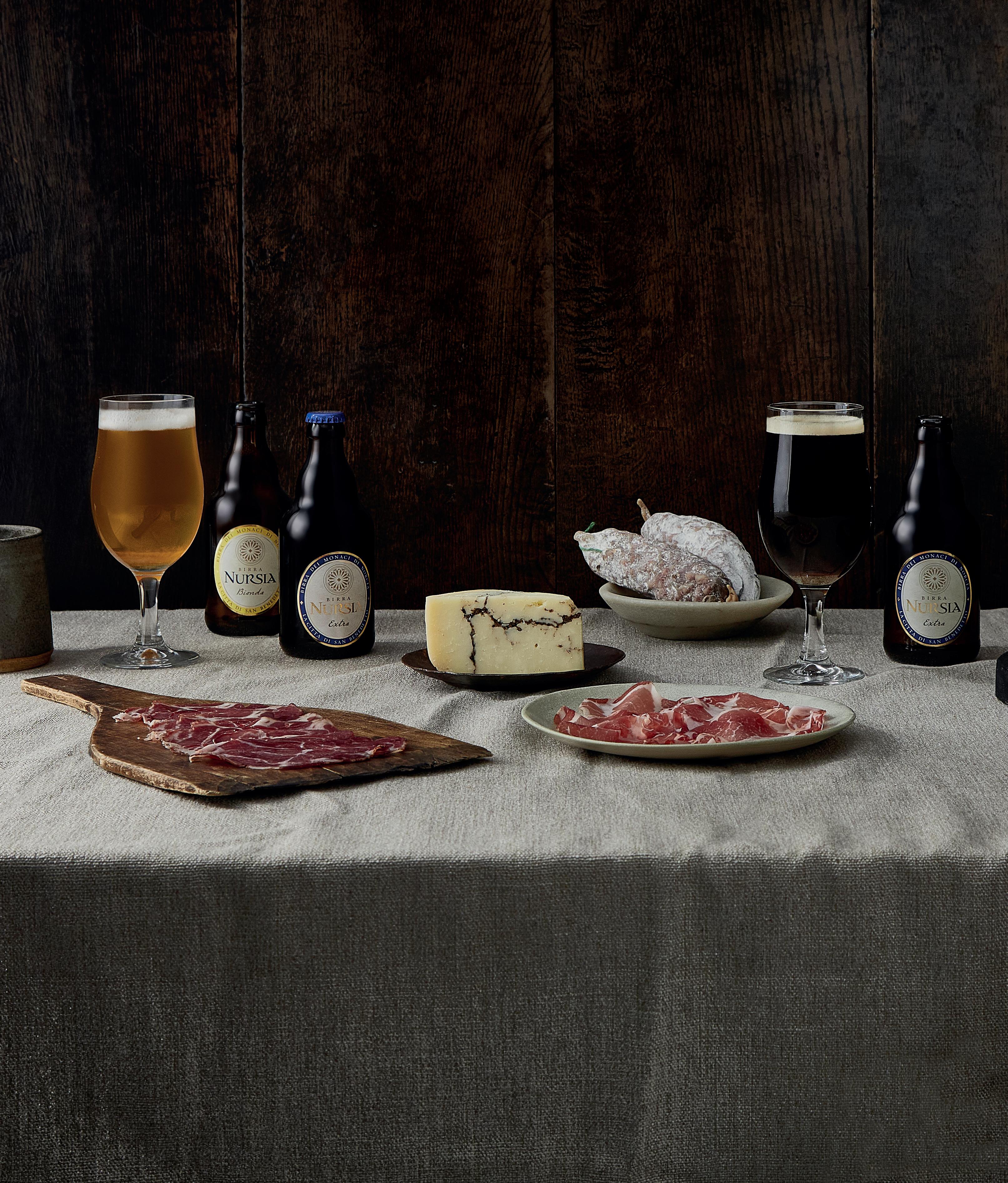R TAL THE P

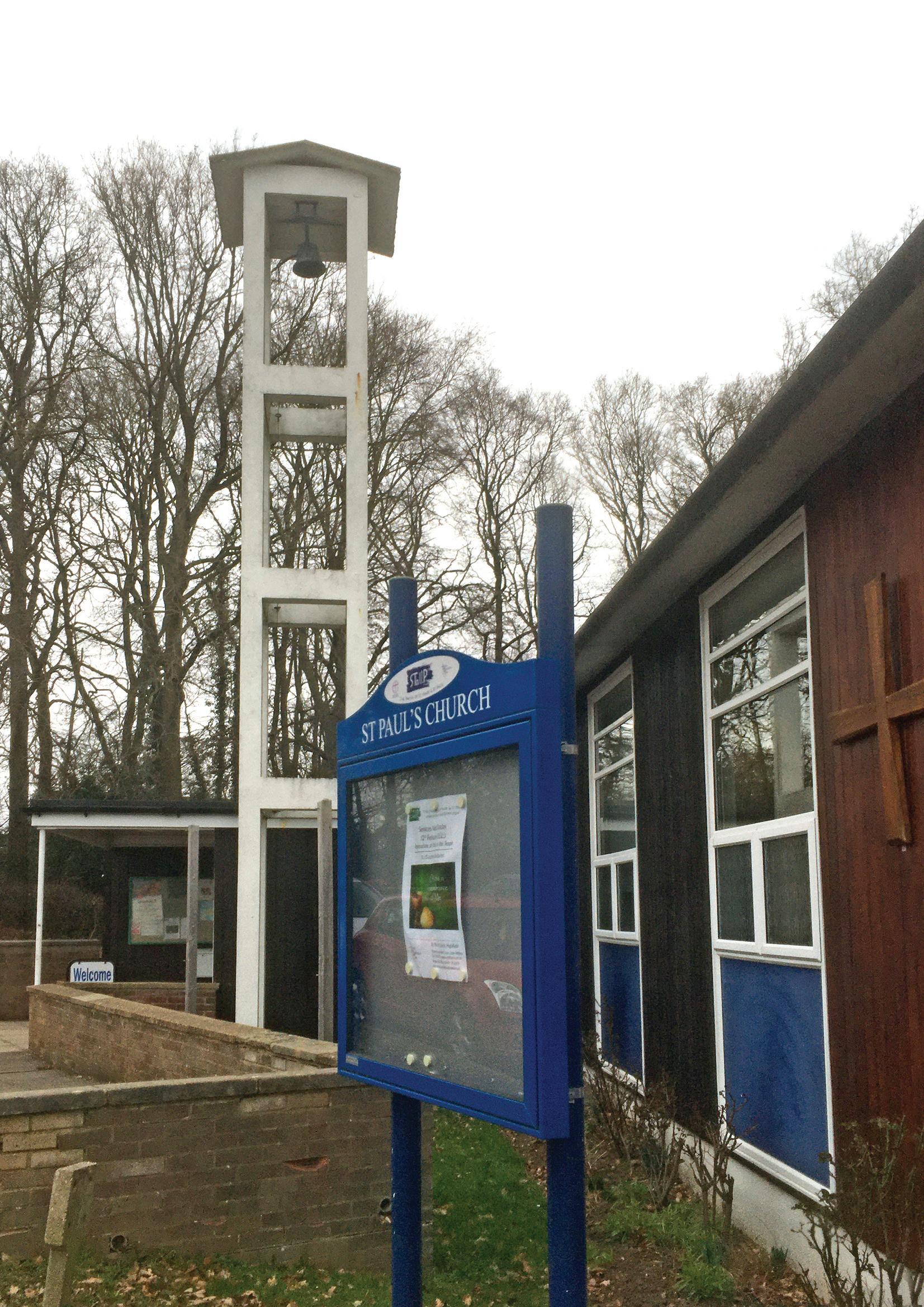 The PorTal is the monthly review of the Ordinariate of Our Lady of Walsingham March 2023 St Paul’s Solway
The PorTal is the monthly review of the Ordinariate of Our Lady of Walsingham March 2023 St Paul’s Solway


 The PorTal is the monthly review of the Ordinariate of Our Lady of Walsingham March 2023 St Paul’s Solway
The PorTal is the monthly review of the Ordinariate of Our Lady of Walsingham March 2023 St Paul’s Solway
is the monthly review of the Ordinariate of Our Lady of Walsingham
March 2023
Volume 14 Issue 159
Page 3 Portal Comment – More on Buffer Zones



Page 4
Ecumenical difficulties – Joanna Bogle
Page 5 Snapdragon sounds off! – Snapdragon
Page 6 Part of the family – Bryan Miller
Page 7 Sharing the Church’s story – David Chapman
Page 10 Visit to Hemel Hempstead – Jackie Ottaway and Ronald Crane
Page 12 News from the Ordinariate – around the UK
Page 13 Calendar and Prayer Intentions
Page 14 Finding us at prayer – in England, Scotland and Wales
Page 16 The Ordinary’s Diary
Page 17 A brave and courageous Priest – Ronald Crane
Page 21 The War in Ukraine: one year on – Ronald Crane
Page 22 National Marriage Week 2023 – Fr Michael Halsall
Page 23 Notre Dame des Miracles – Dr Simon Cotton
Page 24 Our window on the CofE – The Revd Paul Benfield
Page 25 Aid to the Church in Need – John Pontifex
Page 26
Newman’s Umbrella – Fr Peter Conley
Page 27 Mission Audit – Fr Paul Burch

 Gabriel Gilson
Gabriel Gilson
ITSEEMS that the authorities have dropped the charges against Isabel Vaughan-Spruce (See February 2023 edition of the Portal) who had been arrested for praying outside an Abortion Clinic in Birmingham. Nonetheless, it appears, the charges could be reinstated at any time. This leaves Vaughan-Spruce in an ambiguous situation where she does not know if she is free or not. This surely cannot be what British justice is about? She has stated her intention to pursue a verdict in court. At the time of writing, the outcome of this is still uncertain.
Another case has come to our attention. Father Sean Gough is accused of “intimidating serviceusers” of the abortion facility. His crime? Silently praying and holding a sign declaring “praying for free speech” within one of the buffer zones that now surround Abortion Clinics. Another charge relates to the sticker on his car. It reads, “Unborn lives matter”. Such draconian measures are deemed necessary to prevent “harassment” of women using the clinics. However, at the time at Father Gough’s encounter, the clinic was closed!
Father Gough is quoted as stating, “I pray wherever I go, inside my head, for the people around me. How can it be a crime for a priest to pray? I often pray in my head near the abortion facility, but at the time in question, I was praying for free speech, which is under severe pressure in our country today. At all times, I believed my actions to be lawful – freedom of expression, especially when peaceful, is protected in domestic and international law. It is deeply undemocratic to censor public streets, particularly those spaces where we know that many women have benefitted from peaceful offers of help about services available.”
To make matters even more bizarre, at the time that Father Gough was approached by Police, whilst holding the “praying for free speech” sign, he was told that the Police did not think he was breaking the law. It was only later that the priest was invited to attend a police station for interview. When he attended, he was interrogated about the incident and charged with the crime.
In circumstances similar to those of Isabel Vaughan-Spruce, the Crown Prosecution Service dropped the charges against Father Gough. Nevertheless, it was made clear that they could be reinstated. He too, has declared his intention to have his day in court in order to secure a clear verdict, and to clear his name.
On 16th February both Fr Sean and Isabel were acquitted at Birmingham Magistrates Court when the Prosecution offered no evidence.
The bishop who speaks on these matters for the Catholic Bishops’ Conference of England and Wales, Bishop John Sherrington, has continually opposed the buffer zones. He warns of the “implications” of them. He is quoted as saying that they raise questions about the state’s powers in relation to the individual in a free society, both those with faith and those without.

Whilst I applaud Isabel Vaughan-Spruce and Father Sean Gough for their courage and convictions, it occurs to me that prayer can be effective wherever it is offered. This is so, whether the prayer be offered within the notorious buffer zone, or in my little house here in rural Cambridgeshire.
One last thought. In a strange way, the prohibition on prayer within the buffer zones, shows a fear on the part of the authorities, that prayer is powerful and does work!
See: A brave and courageous Priest on page 17
 Joanna Bogle
Joanna Bogle

dEAR… we have all been trying hard over recent decades, but it’s getting v. difficult. Ecumenical gatherings for joint services in local churches…ecumenical Walks of Witness through town centres...these have been good things and all my adult life I have taken part in them. There was a real joy in rousing hymns sung together and a sense of evangelical witness in united outdoor witness on Good Friday. And for some years I have been leading a small ecumenical charity which has been satisfying and has run some useful projects.
But in the past decade two trends became embarrassingly notable. First, in local ecumenical acts of worship, Catholics predominated – even to the extent that on looking round the congregation, one recognised so many familiar faces from Sunday Mass that it was absurd. More than two-thirds of the people attending were RCs. Where were the people from other local churches?
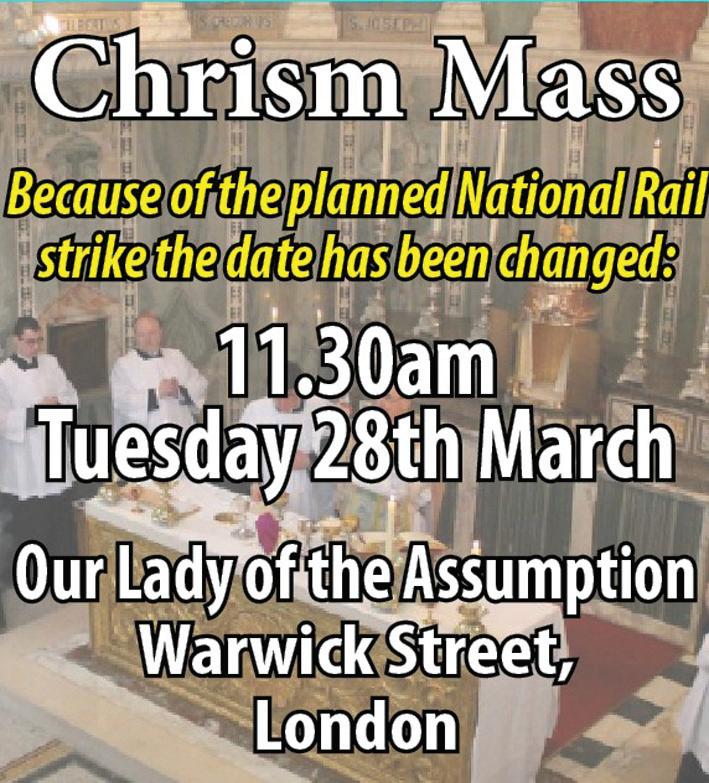
Second: we’ve got a problem. One of the things we all truly felt that we had in common was honouring marriage as the union of a man and a woman. It was understood as God-given, hallowed by Christ’s attendance at the wedding in Cana, taught consistently through all the Christian centuries, and central to the idea of the union between Christ and his Bride, the Church. So now the Anglicans have announced that blessings can be given to same-sex couples who have been civilly married, a door in the ecumenical debate has been slammed shut. There is something almost vicious about it: something sacred that had been shared, now reduced to a muddle.
And just as we were digesting the full implications of this, another brickbat from the poor CofE: the announcement of a formal study to see if the understanding of God as Father can or should be reduced in Anglican prayers and liturgy. The problem over announcing random confusion on marriage, and the Godhead, is not just superficial – it relates to the core of what we believe as Christians.
We liked to say – and believe – that we had so much in common, and that there was scope for genuine faithful united prayer. But, as St John Paul II put it when he wrote to the Archbishop of Canterbury on the subject of the male priesthood, we must speak “in all brotherly frankness”. The CofE is breaking the
limited but genuine sense of unity that we have had in recent years. It has slammed doors and is now cutting off useful dialogue. If Christ got things wrong in urging us to call God our Father, what else that he said is false?
There is still scope for work and prayer between Christians of different denominations. But that means Christians: followers of God our Father and his son Jesus Christ in the unity of the Holy Spirit. Prayer to an anonymous deity, adherence to a sense of confusion about the reality of human beings created by God as male and female…this is all something that can be tolerated and accepted in goodwill and charity in a neighbourly sort of way, but it cannot be understood as connected with Christianity or with seeking an authentic desire for Christian unity.



fRIEnd of mine was lamenting to me recently the fact that his children were somewhat embarrassed with him. The reason for their embarrassment was that he was wearing a cassock in an airport waiting lounge. What irritated him about his off-spring’s discomfort was that on looking around said airport, what did he see? People with purple hair; some with green hair; people with a variety of tattoos on arms and necks; numerous people with ears, eyes, noses and lips all pierced and these were only the visible ones! Yet his children found his cassock wearing an embarrassment but were completely at ease with the plethora of what he believed to be quite bizarre.
Now I do not wish to comment upon some of the fashions of the day,I am hopelessly unqualified so to do. So whether tattoos; body piercings; green hair; purple hair; long coats short jackets; white shirts or coloured shirts are good bad or indifferent I leave to others.
However it did get me musing about clothes and what we wear generally. I assume when people dress in a particular way they are making some sort of statement about who they are, If they wear slashed jeans, have green hair and a pierced nose, or dress like a Goth, they are saying something about themselves. (I am not quite sure what it is they are saying but that they are saying it is certain!) Obviously if someone dresses in what one may call a more conventional way, equally they are making some sort of statement
Now this being the case, that what we wear says something about who we are, then this has implications for our life as Christians.
For example my cassock-wearing friend is saying something about himself. Even when not wearing a cassock he always wears clerical dress. For him it is a statement that he is a Christian minister and he is not ashamed to let people know. And when he celebrates Mass everything he wears from his stole to his chasuble means something they make a statement right down to the particular colour he wears according to the liturgical season has meaning. All of this is important, they are outward signs of something that is going on inwardly. What he wears, the words he says; the actions he performs are all making clear what he is and what he is doing.
This applies to all of us. Outward signs are important in our Christian lives. This is especially so when we think of the sacraments. The Penny Catechism (which now retails at £3.95), defines a sacrament as “An outward sign of inward grace ordained by Jesus Christ by which grace is given to the soul.” An outward sign
is therefore of profound significance. The outward signs of the sacraments - salt, water, bread, wine, oil etc. are all saying something about the Lord and us. They are saying something about who we are; not what we believe. They are making a statement much, much more important than a pierced nose or a pin-stiped suit could ever do.
This applies also to our use of sacramentals outside of the sacraments, from rosaries to scapulars; from Holy Water to Miraculous Medals; from icons and statues to palms. Let us therefore make use of all the outward signs and symbols that Holy Mother Church gives her children. And let us use them with our hearts and minds, so we know why we use them, how they make a statement about who we are - God’s children and in so doing give the Glory to Our Father in Heaven.
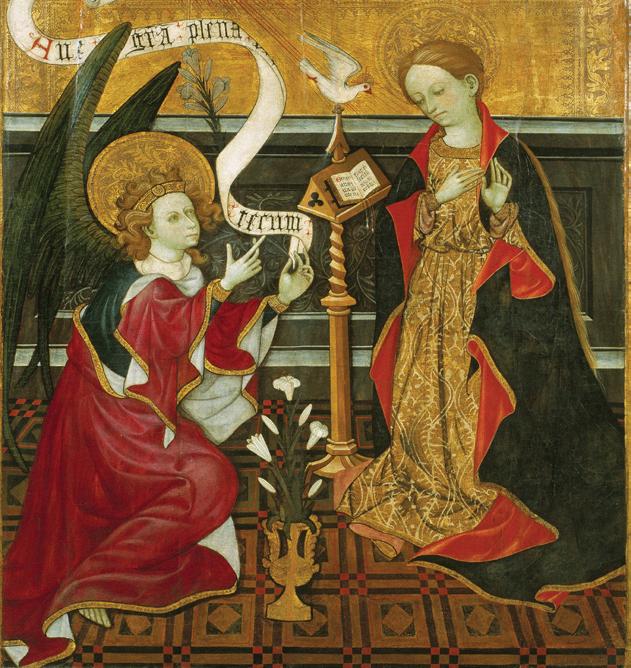


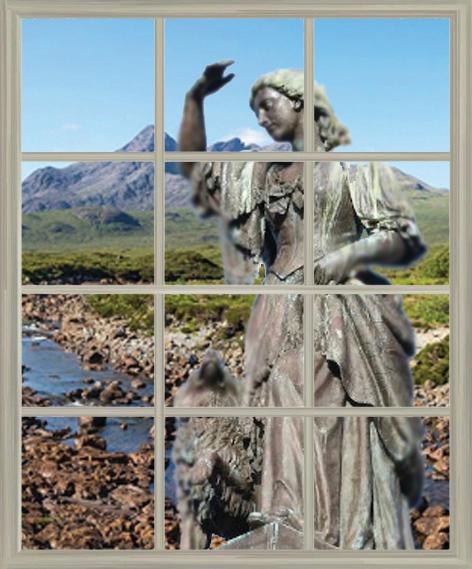


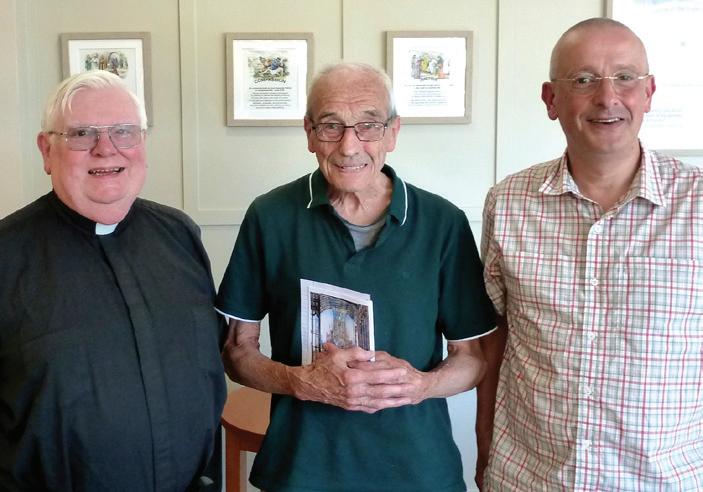
THE beginning of last July Fr Len Black and I embarked on an amazing and unique mini pilgrimage which took us on a round trip of 1,592 miles by land, on motorways, single track roads bordered by high hedges and by sea on an open boat. The simplest way to let you know, in brief detail, of the great pilgrimage we embarked on is to show you our activities day by day about what happened on our amazing journey. We continue ... on day five.
We were following in the footsteps of an amazing and determined man called Aelred Carlyle, born in 1879, who was determined to bring a Benedictine community back to the Church of England and, in time, founded a very substantial Abbey on the Island of Caldey, off the Welsh coast at Tenby. Difficulties with the hierarchy of the Church of England eventually led to the community deciding to leave the Church of England and be received into the Catholic Church as a group, the forerunners, one might say, of the Ordinariates.
Last month I explained that on day four we began the day at Prinknash Abbey attending the Conventual Mass before travelling into the Cotswold countryside to see Woodchester Priory, a beautiful Catholic church, once the home of Blessed Dominic Barberi, who of course received St John Henry Newman into the Church.
The afternoon was spent with Fr Aelred again, clarifying points about Aelred Carlyle and being given a set of clear instructions how to proceed in our own investigations! The help and enthusiasm of Fr Aelred was second to none, and I know that Fr Len and I were sorry to wave him goodbye. It was becoming very clear to us that wherever we went to discover more about Aelred Carlyle, we were met with so much enthusiasm, support and encouragement.
Up very early and off to Wales, this time to stay the night - and offshore! This was a short, but slower
journey of 160 miles. Blessed yet again with gorgeous weather, we arrived at Tenby where we boarded the alarmingly small boat to Caldey Island. We had spoken so often of Caldey Island, the Abbey and Aelred Carlyle, that it was exhilarating to be within sight of the place.

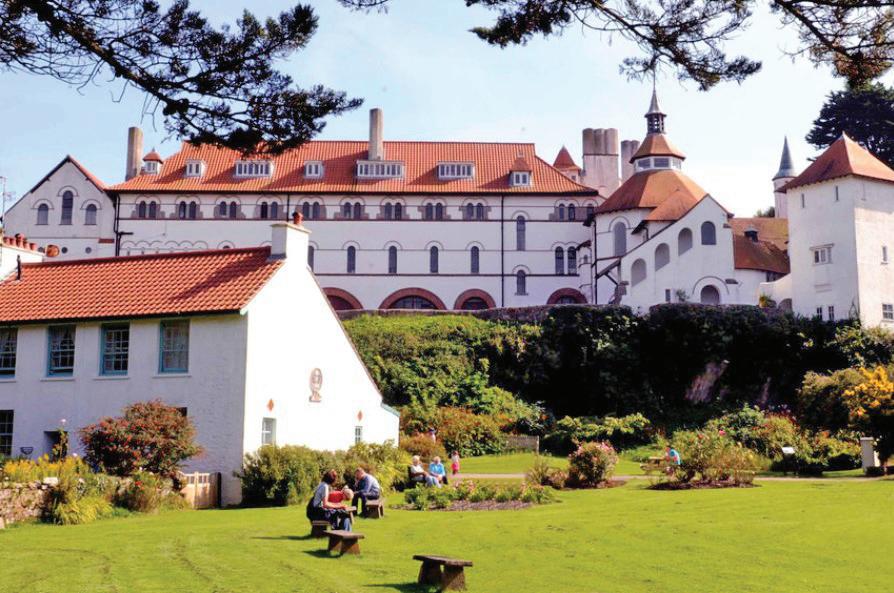
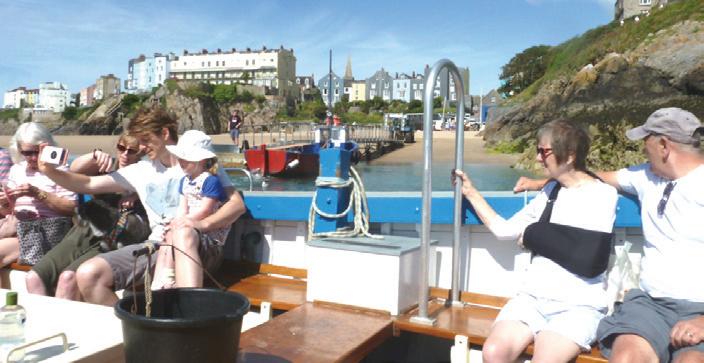
The crossing can be rough, even in clear weather, however all was plain sailing that day and clutching our bags and a copy of Divine Worship: The Missal, we arrived at the slip to be met by the Guest Master, Brother Titus. Monks of the Cistercian Order now own Caldey Island and the Abbey, and they were our most generous and kind hosts for our brief visit.
Brother Titus knew of our interest in Aelred Carlyle, and we were given Carlyle’s former monastic bedroom and study to stay in. Many books were awaiting us in Carlyle’s reception room open at pages to do with the Anglican conversion.
Indeed, the reception room was the actual place where each member of the community, beginning with Carlyle, had made their decision to become Catholics. Those that chose Catholicism were to stand by the fireplace, so we had to have our photographs taken at the fireplace!

We ate with the community and then were taken on a quick tour around the island by Brother Titus, visiting the parish church and lighthouse and had the telegraph hut pointed out to us, where the telegram of congratulations on conversion had come in 1913 from Pope St Pius X.
... to be continued ... next month.

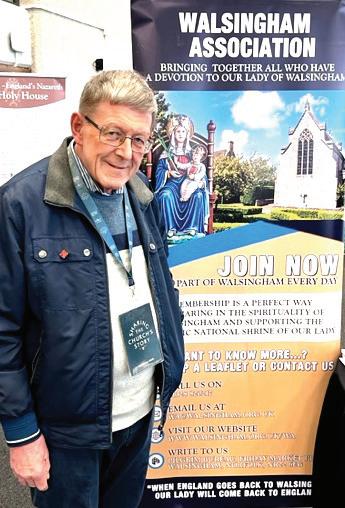

IfTHE Church’s Story is to be shared for future generations by such as were at the QEII Centre on 11th February, she has nothing to fear and everything to hope for. About 1300 people (it was a sell-out) gathered for a day conference organised by Catholic Voices, the Word on Fire Institute and the Guild of Our Lady of Ransom, with support from numerous other organisations.
On entering the main hall I was greatly heartened to find that the assembly was presided over by the statue of Our Lady of Walsingham – I felt at home, despite being conscious of being one of the more senior members of the public present. A large proportion of the audience was young adults, and as I chatted to people during the day, some had come from great distances to be there.
the Portal Editors want 1600 words. How can I do justice to all that we heard during an exceptional conference? The event was opened, and subsequently guided, by Georgia Clarke of Catholic Voices and Fr Paschal Uche of the Brentwood Diocese. Many will remember him welcoming Pope Benedict XVI to Britain on behalf of the young people of England and Wales on the steps of Westminster Cathedral and the warm embrace he received. I recall thinking that if ever there was a young man destined to be a priest… Well, now he is, and a lively and enthusiastic one as well!
After a welcome by Brenden Thompson, CEO of Catholic Voices, the conference was opened and blessed by Cardinal Vincent Nichols and then we settled down in eager anticipation of the Keynote Address from Bishop Robert Barron, the founder of Word on Fire Catholic Ministries. He first spoke of some of his
experiences during his visit to the UK, including Mass with the Tyburn Sisters. He realised that the history of the times of the Tyburn Martyrs and others was a very important part of the Catholic Church in England.
He went on to speak of the Second Vatican Council, saying that much of its vision had yet to be realised and that there was so much more to it than the reform of the liturgy. The Christification of the world through the laity and the universal call to holiness were still ongoing works. He spoke of the expectations of the work of priests in keeping the Commandments, but said that the laity also must engage in the evangelical counsels in telling the Church’s story.
Poverty was not only the common view – seen all too often in the world today – but also called individuals to a detachment from the things of the world. We should ‘seek first the Kingdom of God’ rather than striving always to be at the top of the wheel of fortune – from which the only way is down. He cited the cases of John Lennon and Thomas More! He commended the practice of titheing to enable the giving of more help to the poor and suggested that when purchasing goods, going to the ‘next level down’ from the original intention and giving the difference in price to charity was a good idea.
On chastity, Bishop Barron urged all to love others in a way that considered other people first – and that our sexual lives should be a part of this. So many misunderstood the teaching of the Church, condemning it as body-hating and puritanical, but this is incorrect. Its teaching aims to promote unity, love and respect each for the other.
The bishop spoke of obedience; of the obedience of a priest to his bishop and of the bishop to the Holy Father. Obedience is not an easy path to follow. For the laity it should be the surrendering of life to God’s purposes, and not only in great things. He commended ‘The Little Way’ and the practice of always following the path of love for the good of others. The theme of love for others above the love of self pervaded all that the Bishop said. To judge by the tremendous applause he received, it was a message that was well received and approved of by his hearers.
After a short break and a few moments of poetry from Sarah De Nordwall, Bishop Barron and Tom Holland took the podium. Tom is an award-winning historian, biographer and broadcaster. The bishop spoke first of his total opposition to the ‘dumbing down’ evident in the Church and insisted that to emphasise the beauty and truth of the Catholic faith was the way to go, not to conform to the expectations of the world. Tom Holland spoke of his faith journey and how he came to see that the Catholic Church had had a profound influence on world history. Humanism and atheism and Protestantism had affected this history and the Catholic Church was in danger of conforming in some ways to their expectations.
Bishop Robert asked, “What is the highest good that we worship?” He saw clearly that young people especially recognised the need for something more than the superficial. They responded to beauty and truth when it was presented to them. In a sense the very weirdness of Christianity is a strength as the paucity of secular culture appears more and more irrelevant. Tom Holland noted that, for all the secularisation of society, its basis was still in Christian principles. Now that the state had appropriated so much that the church used to do – education, health and so on – what was left for the church still to do?
It now needed to major on its distinctiveness. It should beware of accommodating itself to secular thought or it ran the risk of becoming indistinguishable from it. The Church has failed to transmit the story – the history that underpins Christianity. In particular, he cited the failure of Catholic schools in this respect. (This was greeted with loud applause.) The Church had sought secular approval but had gained only relegation to a position of irrelevance. It should seek to regain a position ‘in the driving seat’.
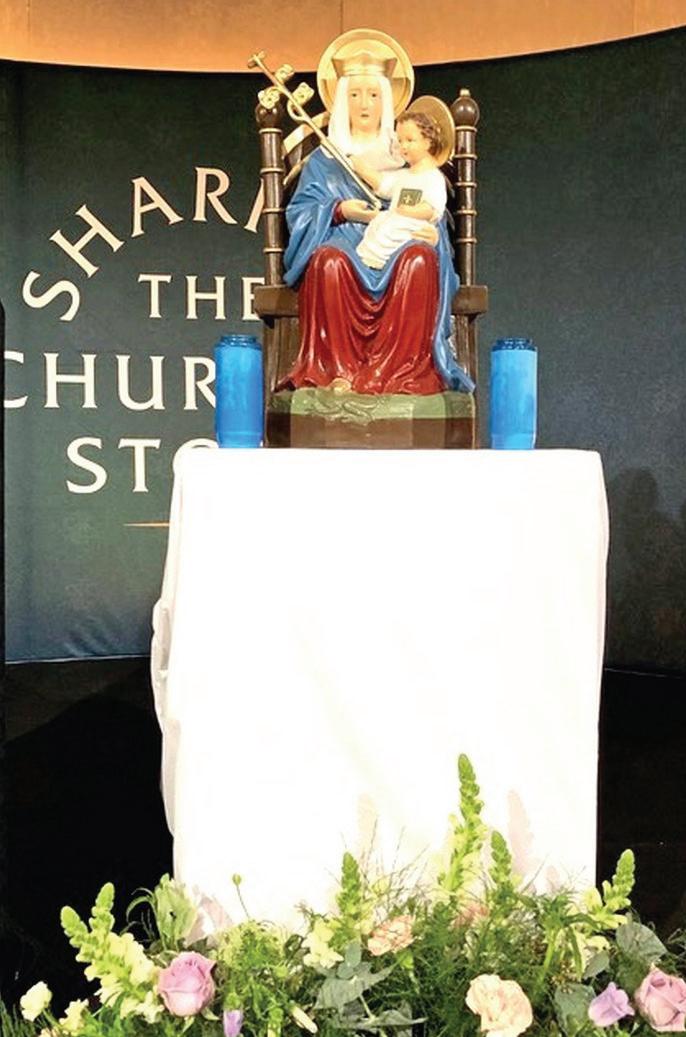

The Church has survived all that it has gone through over the centuries; all other systems have ultimately failed. So what is the role of the Church today? Tom Holland suggested that the Church needed to redefine itself clearly to a society that had grown up in virtually total ignorance of what it actually stood for, rather than the misunderstandings it thought it represented. Bishop Robert suggested that the time had come to explode the dynamite of the Gospels afresh – though he recognised that, addressing Parliament in Westminster Hall, that had been perhaps an ill-chosen suggestion! However, explosively or not, we need to keep announcing, loud and clear, the message those Gospels proclaim.
A lunch break enabled much catching up with old friends and a chance to visit the numerous stalls set up by organisations in the circulating area adjacent to the main hall. It was good to see Walsingham, both Shrine and Association, well represented, though sadly not in the busiest part of the concourse.
From 2pm until 3.45pm there were four ‘Breakout’ sessions. Not having mastered the art of quadrilocation, I can report only on one of them! This was a conversation between Mgr Michael Nazir-Ali, a well-known member of the Ordinariate, and John Pontifex of Aid to the Church in Need, the subject being ‘Christian Persecution: Breaking the Silence’. Mgr Michael started by quoting Benedict XVI on the marginalisation of Christianity and how it had been silenced in many countries throughout the world. Now, he said, there was a danger of this happening in the UK. There was an urgent need to address the neglect of the traditions of freedom which had for so long been taken for granted. He went on to suggest several models of the denial of religious freedom.
• In Eritrea - the result of an individual’s tyranny.
• In China – the ideological persecution of religion in the wake of largely abandoned Marxism
• In India – a national insistence on the supremacy of Hinduism

• In the Holy Land – Christianity caught between nationalism and militant Islam.
• In the Western World there is an increasing threat to freedom of speech on matters of gender, of abortion, on freedom of worship and of conscience in counselling. Legislation on hate speech and equality left no room for conscience. What should be we do about Christian Persecution? Mgr Nazir-Ali had four suggestions:
1. Targetted prayer – focussed on specific places and people.
2. Advocacy – we should support those who are present in international forums to ensure a Catholic presence and, for example, contact MPs not only about local or UK-related matters.

3. If possible – Go to places of persecution and see for yourself – and act.
4. Give – opposing persecution costs money.
The final address was by the ever-inspiring Mgr John Armitage. He spoke of the danger of weariness, apathy and cynicism at this time of a change of era. The phoenix of the Spirit will always rise, but how should we respond to the approach of a new era? The Church had spectacularly failed to see the current collapse coming. Cultural Catholicism was no match for the rise of capitalism. The decline was not in faith but in the practice of that faith. A New Evangelisation was needed – a new way – a 3rd Spring.
The 1st Spring was at the behest of Pope Gregory, whose monk-missionaries to this country basically established the system of parishes which exists to this day, and remember that much of what happens in parishes is lay-led.
The 2nd Spring followed the sixteenth century martyrdoms and subsequent persecution. Churches were built and rebuilt, schools were established and so on – this is the pattern of ‘church’ we have today, but its time is drawing to a close as worship of God is increasingly replaced with worship of other things. Many parishes are no longer evangelising; there is a general apathy. A renewed fire of the Spirit is needed
1. There is a need to acknowledge the call of Jesus. There is too much hesitancy. Each person needs to heed the call of their personal vocation.
2. We need to read the signs of the times, not the signs of the church. We need experts in humanity in order effectively to evangelise.
3. We need to listen to the Spirit and to the outstanding living witnesses that are raised up. Modern culture alienates us from our true feelings. We need to journey from ‘I want’ to ‘we need’ to be. The remnant of the Catholic Church after the 16th Century grew strong again. The test of our faith is our joy (not the same as happiness). The beginnings of a New Spring will not be easy and smooth, but the more our trials, the greater will be the presence of Our Lady and the saints and martyrs. According to our need, so shall be our strength.
An inspiring address indeed. Finally, a thoughtful time of adoration of the Blessed Sacrament and Benediction – with beautiful music for the Latin hymns and finally a ‘Salve’ to raise the roof and send us on our ways with joy in our hearts.
the Official on-line magazine of the Personal Ordinariate of Our Lady of Walsingham

Saturday 17th June 2023 at 1300
at Our Lady of the Assumption and St Gregory Warwick Street, London, W1B 5LZ
Principal Celebrant and Preacher: The Right Revd Keith Newton

Ordinary of the Personal Ordinariate of Our Lady of Walsingham
Clergy are invited to Concelebrate – White vestments


Mission at Hemel Hempstead is one of the Ordinariate’s original groups. We have had the pleasure of visiting it on more than one occasion. For the first years of its existence, it worshipped in the chapel of a local Catholic school. However, as time passed it became clear that this was not the most suitable place for them to be.
For many years, the Anglican Church of St Paul, Solway in Hemel Hempstead, had been shared with a Catholic congregation. This arrangement worked rather well, and it was a source of sadness when it came to an end. The Anglican congregation at St Paul’s described the loss of their Catholic Brothers and Sisters as “a bereavement”.
Fr Simon Chinery was the Ordinariate Group Pastor, and he got to know The Revd Canon John Williams, Team Rector of the Anglican churches in Hemel. When Fr Simon moved on to pastures new, the new priest at the Ordinariate Mission, Fr Neil Scott, wondered if the shared church arrangement could be revived. Canon John was all for it, and the Anglican Diocesan Authorities and the Ordinariate Authorities worked out a suitable agreement.
Regular readers of the Portal will remember that last year, we visited the Hemel Mission, just as they were preparing to move. Well now they have moved. Their mass is celebrated at 0915 every Sunday at St Paul, CofE Church, Solway, HP2 5QN.
The Ordinariate Mission told us that they had been welcomed with “open arms”. Canon John is thrilled that the sharing arrangement has been revived. He told us, “Well, hopefully that’s true. Certainly it’s been my vision to make everyone welcome and I’m sure the parish have joined in that. We had a Roman Catholic congregation worshipping at St Paul’s here for forty years. When they left it was a great break. People were bereaved by that, the breaking of that relationship. So I think when we heard the opportunity was for the Ordinariate to worship here, we were delighted.”
Fr Neil Scott, who looks after the Hemel Mission, thought the move had gone very smoothly. The Canon and the Trustees had been most helpful. He told us, “We haven’t had any problems so it seems to be moving along quite smoothly. It’s nice
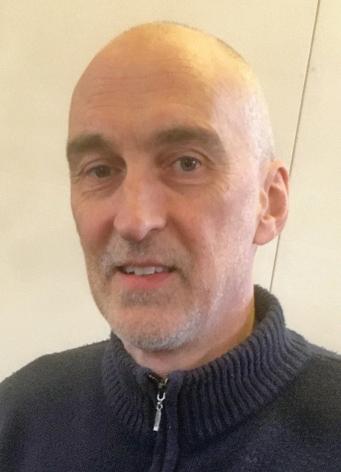

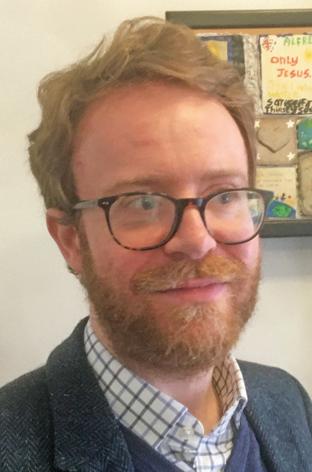
to rekindle the fire as it were, in the parish, of being a joint parish and sort of ecumenical movement in the area. We’ve produced this leaflet which is going out in the area and hopefully the cradle Catholics who did attend here, who didn’t go to the local parishes, may think, oh we’ll start attending again, and other people who’ve never thought about the Ordinariate may see this leaflet come along see our friendly welcoming parish group mission and hopefully continue coming and we can grow.”
They have already had a joint Service of Lessons and Carols that went very well, being in both traditions. Fr Neil said, “I think the church was hidden in the school complex, so it was difficult for people to see us. Also we had to arrange for the gates of the school to be opened and closed whenever we wanted to use the church. Here we have our own set of keys, we can arrange with the parish groups around times when we can have services. We have the hall for Easter. There’s a group that uses the parish hall on Wednesday night. Before we knew it somebody had already phoned the people who run the group that evening who said they would be happy to cut their session short, so we can have the Ash Wednesday service at our time. So there’s a lot of give and take. We hope to be able to celebrate the Triduum here.”
It is the visibility of St Paul’s that makes it so attractive to the Ordinariate. As Fr Neil told us, “It’s a very visible church, on the bend in the road, and it has a little car park of its own. But you can park on the road anyway. The location is very, sort of, suburban. There’s lots of houses, a little parade of shops down the road. So yes I think it’s a much better place than we were before.”
John Worley chipped in, “And it’s quite near our own Presbytery. It is only five minutes’ walk down the road.” Jackie said, “Speaking of that. Dare we ask, are you any nearer coming to Hemel?” Ø
Fr Neil responded, “So: I will move here in March 24.” We asked if Fr Neil was still happy in the Prison? He said that he enjoys his work there, and hopes for new things in the future.

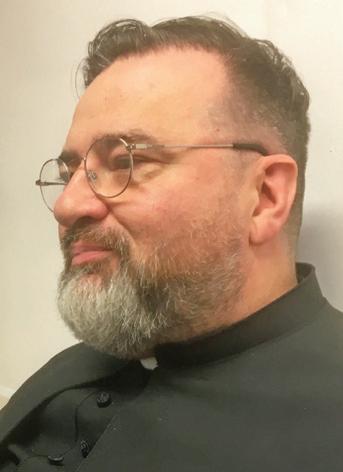
Chris Grey has a most important job at mass. He often reads the Scriptures. He was received into the Catholic Church, via the Ordinariate, four years ago this coming Easter. His wife, Liz, and youngest daughter Izzy, (10) have also been coming to the Hemel Ordinariate Group for about the same time as him. Unfortunately they were both ill the day we showed up! Importantly, they have five other grown-up children. A large, wonderful family who have blessed us immeasurably. “Yes, I often read at Mass, and enjoy doing so, and on the rare occasions Janette is away, I play the organ. In fact, when our brilliant Cantor Alex Garner is away, Janette and I do a quick swap for the Psalm—she sings, I play. I am a musician by training from an early age (violin and piano), and I also taught secondary music for over 20 years. I have been in academia for some time now. I am on the faculty of the London School of Theology, and I am also a research fellow at the Margaret Beaufort Institute of Theology, Cambridge.”
Katharine is the Mission Treasurer. We asked, “Well now how are you finding it?” She replied, “Good, fine, very good. Yes. It’s different, but welcoming. I think the biggest difference is the freedom of use of the space. Although it’s rented out for other purposes, but being able to negotiate things like evening services, and bits and pieces like that, we have much more freedom of use. I think that’s a real positive. I think we need to just get ourselves known over here really. We need to sort out a sign; we’ve got that on the agenda. It is early days, but already we’ve had a couple of collaborative pieces with the services. Nine lessons with carols we did together which was a positive, and also the Patronal Festival of the Conversion of St Paul, recently we came and joined in and were a part of that which I think is also a positive thing to do.”
Nick Molnar made the move. He told us, “It’s taking a bit of adjusting. But I think it’s nicer to have our own church. I know we’re still sharing it, but very slowly giving it our own identity as best we can. It’s like anything isn’t it, all takes a bit of adjusting. We’re settling down and it’s all becoming gradually the norm. It’s not taken us long, so it’s all been good. It’s got that slightly


more historical feel compared to the previous church.

The church we were at was much more modern architecture; this might be more of a slight nod to more English architecture, not so much from the outside but from the inside it will feel more like a stereotypical old church, although technically it’s not. We’ve also gone back to a nice old organ when we previously had an electronic keyboard that sounded fine, but now we’re back to a traditional sound. The congregation here welcomed us with open arms from a lay person’s point of view. The Anglican congregation are very welcoming. I don’t think they’re much larger than our own, so they’re not overwhelmed.”
Alex Garner is a Seminarian, doing two days a week at Allen Hall and the rest of the time at home, mainly looking after children when his wife Rochelle is not on maternity leave. He is mid-way through his second year of study. He told us, “We were at Warwick Street for a while, where I was received. We came to Hemel to do a summer placement for a few weeks when Fr Simon was still here. Then we came every now and again. But what with the move happening from St Mark’s to here I thought it would be a good time to come and join the group and to be a part of it and experience that and learn from it. So we spent a bit of time at St Mark’s as well as here and I think it seems to have worked so far.
“I think there are questions need to be worked out but I can see that it’s very promising. I think there is more of a chance for growth now. It’s not just a building. Other things need to be in place. But it’s a better location to be here certainly, not behind locked gates. No one could ever find the church. When we came, we needed detailed directions to find the place and so there’s definitely potential in things like that. We come to it because there is a lot for us to learn and we have things to contribute. But it’s a good friendly group. There’s obviously a strong community here and an identity and I think as we’ve been and found a warm welcome and a good presence here. I’m sure anyone else would find the same if they were to come, especially perhaps a family, with children.”
This Mission has embarked upon an exciting journey. Keep them in your prayers, and maybe we will return next year to see how things are going.




yOuwILL have noticed that 30th March, the date we have advertised for this year’s Chrism Mass at Our Lady of the Assumption and St Gregory, Warwick Street, London, clashes with a proposed National Rail strike. This would make it difficult for many people to attend.
We have therefore changed the date to Tuesday 28th March at 11.30am which we thought would be better than the day before or after the rail strike as trains would still be disrupted. Fortunately, Archbishop Kevin MacDonald can manage this date and he will be the principal celebrant.
With the assurance of my prayers as we begin the Holy season of Lent.
The Right Revd Mgr Keith Newton– come and discover the hidden gems of one of the world’s great cities! We will discover 17th century charity schools, 19th century Cardinals, and a Medieval mill! The Walk will finish in the Victoria Tower Gardens, alongside Parliament.
This History Walk is being repeated FOUR times so as to offer different opportunities for people to attend.
Thursday March 2nd: Meet 6pm (after 5.30pm
Mass) steps of Westminster Cathedral
Saturday March 4th: Meet 3pm steps of Westminster Cathedral

Thursday March 9th: Meet 3pm, steps of Westminster cathedral
Friday March 17th: Meet 6pm (after 5.30pm Mass) steps of Westminster Cathedral

NO NEED TO BOOK: just turn up! We suggest a donation of £5 - www.catholichistorywalks.org
THE SERIES of Spiritual Conferences held on Zoom, will continue on the first and third Wednesdays of March (1st and 15th), at 8pm. They will last 20-25 minutes, and will be delivered this month by two women, both of whom are trained and experienced spiritual directors. We look forward to their particular insights, and we shall pray the Office of Compline afterwards.
The Zoom links are as follows:
1st March – Dr Antonia Lynn: www.bit.ly/Sp-Conf-1-Mar (Meeting ID: 892 1343 0754 / Passcode: 172358)
15th March – Mrs Julianne Chatfield: www.bit.ly/Sp-Conf-15-Mar (Meeting ID: 819 4210 4319 / Passcode: 853293)
All Members, Associates, and Friends of the Ordinariate are welcome to join us, as are those interested in joining the Ordinariate.
“BywAyS Of wESTMInSTER”

Month of St Joseph
For victims of abuse: We pray for those who have suffered harm from members of the Church; may they find within the Church herself a concrete response to their pain and suffering.

BIRMIngHAM St Margaret Mary, 59 Perry Common Road, Birmingham B23 7AB MASS: Sunday: 11am (Divine Worship). ConTACT: Fr Simon Ellis: 0121 373 0069 - birmingham@ordinariate.org.uk
BRISTOL St Joseph, Camp Road, Weston-superMare BS23 2EN MASS: 2nd Sunday 12 noon (Divine Worship), followed by shared lunch and Benediction at 2:30pm (subject to change in the summer months)
ConTACT: Fr Bernard Sixtus: 02920 362599 or 07720 272137 - bristol@ordinariate.org.uk
BucKfAST St Mary’s Abbey, Buckfast TQ11 0EE
The Ordinariate Mass is not currently being offered at the Abbey due to present restrictions. Fr Hellyer is offering the Ordinariate mass in his parish in Plymouth. ConTACT: Fr Ian Hellyer: 01752 600054 - ian@hellyer.org
cHELMSfORd Blessed Sacrament, 116 Melbourne Avenue, Chelmsford CM1 2DU MASS: Sunday: 9.30am and 11.30am, (on 1st Sunday of the month, specifically Ordinariate), also on Mon to Sat at 9.15am with RC community ConTACT: chelmsford@ordinariate.org.uk
cHIcHESTER St Richard, Cawley Road Chichester PO19 1XB MASS: Saturday 4.15pm (Divine Worship) ConTACT: Fr Simon Chinery: 07971 523008 - chichester@ordinariate.org.uk
cORnwALL For up to date information about the Cornwall Group, please ConTACT: Fr David Lashbrooke: 01803 329703 or 07847 222030cornwall@ordinariate.org.uk
cOVEnTRy The Precious Blood of Our Lord Jesus Christ & All Souls, Kingsland Avenue, Earlsdon, Coventry CV5 8DX MASS: Sundays 11.15am, Mon-Wed 9.30am, Thu 7.30pm, Fri 7.30am, Sat 9.30am - all Masses currently live streamed ConTACT: Fr Paul Burch: 02476 674161 - paul.burch@ordinariate.org.uk
cROydOn At the moment the Croydon Group does not have any Ordinariate Masses, but it is hoped that they might begin again soon - for further information ConTACT: Jackie Brooks: 0208 777 6426 - jaxprint@btinternet.com
dARLIngTOn St Osmund, Main Road,
Gainford, County Durham DL2 3DZ MASS: Sundays: 9.30am and 11.30am (Divine Worship); Tues: 10am; Fri: 11.45am Sext, 12 noon (Divine Worship). ConTACT: Fr Thomas Mason: 07876 308657 - info@ ordinariate-darlington.co.uk - www.ordinariatedarlington.co.uk
dERBy/nOTTIngHAM Our Lady and St Thomas, Nottingham Road, Ilkeston DE7 5RF MASS: Sat before 1st Sun 6.30pm (Divine Worship), Thu 9.15am (Divine Worship) St Paul, Lenton Boulevard, Nottingham NG7 2BY MASS: Sun 6pm (Divine Worship). ConTACT: Fr Andrew Harding 01159 325642. Fr Christopher Cann: 01889 569579, Fr Peter Peterken: 01332 766285, Fr David Jones: 01162 302244 - derby-nottingham@ordinariate.org.uk
EASTBOuRnE Christ the King, 3 Princes Road, Langney, Eastbourne BN23 6HT Mass: Sun 4pm, Thur 7pm (both Divine Worship) ConTACT: Fr Neil Chatfield: 07718 123304 - neil. chatfield@eastbourneordinariate.org.uk- www. eastbourneordinariate.org.uk
fOLKESTOnE/dOVER St Paul’s, 103 Maison Dieu Road, Dover CT16 1RU MASS: Sunday: 11.30am (with parish) ConTACT: Fr James Houghtonfolkestone@ordinariate.org.uk
HARLOw The Assumption of Our Lady, Mulberry Green, Old Harlow, Essex CM17 0HA MASS: Sunday: 10am and 6pm (Divine Worship 1st Sun), Wed 10am (Divine Worship). Check bulletin at www.catholicchurchoftheassumption.co.uk or ConTACT: Fr John Corbyn: 01279 434203john.corbyn@btinternet.com
HEMEL HEMPSTEAd St Paul’s, (Anglican) Solway, Hemel Hempstead HP2 5QN MASS: Sunday: 9.15am ConTACT: hemel.hempstead@ordinariate. org.uk
ISLE Of wIgHT St Thomas of Canterbury, Terminus Road, Cowes PO31 7TJ MASS: (Divine Worship) for details, C onTACT: Fr Jonathan Redvers Harris: 01983 292739 - frjonathanrh@btinternet.com
LOndOn cEnTRAL Our Lady of the Assumption and St Gregory, Warwick Street, London W1B 5LZ (Nearest tube: Piccadilly) MASS:
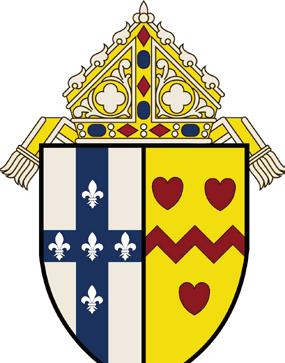
Sunday: 10.30am Solemn Mass with choir, Weekdays: 8am and 12.45pm (all Divine Worship), Sat 6pm (Novus Ordo), Feasts and Solemnities as advertised.
ConTACT: Fr Mark Elliott-Smith 07815 320761markelliottsmith@rcdow.org.uk
LOndOn LEyTOnSTOnE St John
Vianney, 1 Stoneleigh Road, Clayhall, Ilford IG5
0JB MASS: Sunday: 9am, 10am, 4.30pm Adoration, 5pm (Divine Worship), Daily: 8.30am Adoration, 9am Mass, 5.30pm Evening Prayer. C onTACT: Fr Rob Page: 020 8550 4540 - vianney.clayhall@ btinternet.com
LOndOn SOuTH Most Precious
Blood, O’Meara Street, The Borough, London
SE1 1TE MASS: Sunday: 9.30am, 11am; TuesFri 12.35pm, Thur (term time) 6.30pm (Divine Worship); Sat 10am (Divine Worship); Holy
Days: 6.30pm (Divine Worship); Evensong: Thur 6pm (term time); Confessions: Tues-Fri 12 noon ConTACT: Fr Christopher Pearson 0207 407 3951 - parish@preciousblood.org.uk - www. preciousblood.org.uk
LOndOn wALTHAMSTOw Christ the King, 455 Chingford Road, Chingford, E4 8SP MASS: Sunday: 11am ConTACT: Fr David Waller: 020 8527 4519 - walthamstow.south@ordinariate.org.uk
MAIdSTOnE St Mary, Nettlestead, Maidstone
ME18 5HA MASS: Sunday 9.30am. ConTACT: Fr Alastair Ferguson: 01892 838230 - 07887 925356 alastair.ferguson@ordinariate.org.uk
MAncHESTER St Margaret Mary, St Margaret’s Road, New Moston M40 0JE MASS: Sunday: 10.30am (Divine Worship) MASS during the week: please check the Sunday notices on the website ConTACT: Fr Andrew Starkie: 0161 681 1651 - manchester@ ordinariate.org.uk - www.ordinariatemcr.com
nORTHAMPTOn Our Lady of the Sacred Heart, 82 Knox Road, Wellingborough NN8 1JA
MASS: First Saturday of the month: 6pm (Sung Mass)

ConTACT: Mgr John Broadhurst: 01933 674614frjohnbroadhurst@btinternet.com
OXfORd Holy Rood, Abingdon Road, Oxford
OX1 4LD MASS: Saturday (of Sunday) 5pm (Divine Worship), Sunday 11.15pm, Wed 9am, Thu 7.30pm (Divine Worship), 8pm Adoration & Confessions, 9.40pm Compline and Benediction, Fri 12.30pm (Latin), Sat 9am ConTACT: Fr Daniel Lloyd: 01865 437066 - daniel.lloyd@ordinariate.org.uk
PLyMOuTH St Edward the Confessor, Home Park Avenue, Peverell, Plymouth PL3 4PG MASS: Sunday 11.30pm, Fri 12 noon (both Divine Worship) ConTACT: Fr Ian Hellyer: 01752 600054 - ian@hellyer.org
RAMSgATE Shrine of St Augustine, St Augustine’s Road CT11 9PA MASS: Sunday 5pm (Divine Worship), followed by refreshments ConTACT: Fr Simon Heans: 07305317642 - office@ augustineshrine.co.uk
PORTSMOuTH St Agatha, Cascades Approach, Portsmouth PO1 4RJ MASS: Sunday 11am (Solemn), Mon, Fri (Requiem) and Sat 11am ConTACT: info@ stagathaschurch.co.uk - www.stagathaschurch.co.uk
REAdIng St James, Abbey Ruins, Forbury Road, Reading, Berkshire RG1 3HW (next to old Reading Gaol) MASS: Sunday: 9.15am. ConTACT: Fr David Elliott: 07973 241424 - reading@ordinariate.org.uk
SALISBuRy St Osmund, Exeter Street, Salisbury SP1 2SF MASS: Sunday: 12 noon, Wed: 7pm. ConTACT: Fr Jonathan Creer: 07724 896579 - jonathan.creer@hotmail.co.uk - www. salisburycatholics.org/ordinariate
SOuTHEnd St Peter’s Eastwood, 59 Eastwood Road North, Leigh on Sea SS9 4BX MASS: Sunday: 9am, 10.30am, Mon 7pm, Tues, Wed, Fri 9.30am, Thur 11am, Sat 10am (Divine Worship) and 5.30pm (Vigil) ConTACT: Fr Jeffrey Woolnough (Group Pastor): 01702 525323, 07956 801381 - fatherjeffw@gmail. com, Fr Bob White: 01268 543910 - pilgrimclub@ waitrose.com, Dcn Richard Cerson: 07910 388795 - rcerson@gmail.com - www.stpetereastwood.orgwww.jeffwoolnougholw.blogspot.co.uk
TORBAy Our Lady of Walsingham with St Cuthbert Mayne, Old Mill Road, Torquay TQ2 6HJ MATTInS: streamed Tues-Fri: 7.50am, Sat, Sun: 9am MASS: Sunday: 10am, Mon: 12 noon, Tues: 6.30pm, Wed-Sat: 10am, Solemnities 7pm (All masses are streamed except on Monday) PARISH PRIEST: Fr David Lashbrooke: 01803 329703 or 07847222030lashy@me.com - www.ourladytofwalsingham.online for up to date information and for streaming.
wALSIngHAM The Annunciation, Friday Market, Walsingham NR22 6AL MASS: 1st Sunday: 2pm (Nov-Mar), 3pm (Apr-Oct) (Divine Worship), 2nd Sun: Evens and Benediction, 4pm at Our Lady of Pity, Swaffham, 4th Sun: Mass: The Pontifical Holy House, The Annunciation, Kings Lynn at 2pm. (3pm April to October). Live streamed. ConTACT: Fr Gordon Adam: 01553 777428 - gordonadam1962@ Ø
btinternet.com Dcn Shaun Morrison: 07880 600094shaunmorrison1975@btinternet.com
ScOTLAnd - www.ordinariate.scot

ABERdEEn University Catholic Chaplaincy, Elphinstone House, 7 High St, Aberdeen AB24 3EE
MASS: Saturday before 2nd Sunday: 12 noon (Divine Worship) ConTACT: Fr Len Black: 01463 235597fr.len@ordinariate.scot
EdInBuRgH St Columba, 9 Upper Gray St, Edinburgh EH9 1SN MASS: 2nd Sunday: 11.30am (Divine Worship) ConTACT: Fr Len Black: 01463 235597 - fr.len@ordinariate.scot
InVERnESS Royal Northern Infirmary
Chapel, Ness Walk, Inverness IV3 5SF MASS: Sunday: 11am (Divine Worship) Oratory of St Joseph, 49 Laurel Avenue, Inverness IV3 5RR MASS: Tues, Wed, Thur, Fri, Sat and Feast Days 11.15am (all Divine Worship) - please check times at: www.ordinariate.
scot ConTACT: Fr Len Black: 01463 235597 - fr.len@ ordinariate.scot
wHITHORn St Martin and St Ninian, George Street, Whithorn DG8 8PZ MASS: Wed 10.30am (Divine Worship); Stonehouse Mill, Sorbie DG8
8AN MASS: First Sunday 11am (Divine Worship) (contact Fr Simon for directions), ConTACT: Fr Simon Beveridge: 01988 850786 - whithorn@ordinariate.scot
nAIRn St Mary, 7 Academy Street, Nairn IV12
4RJ MASS: 1st Mon 10am (Divine Worship) ConTACT: Fr Cameron Macdonald: 01667 453867nairn@ordinariate.scot
wALES: SOuTH EAST Ss Basil & Gwladys, Tregwilym Road, Rogerstone, Newport NP10 9DW MASS: Sunday: 11am (Divine Worship) ConTACT: Fr Bernard Sixtus: 02920 362599 or 07720 272137wales@ordinariate.org.uk - www.ordinariate.org.uk/ groups/wales-se.php
Please help us keep these pages up to date and let us know of any changes - email: info@portalmag.co.uk
The Presbytery, 24 Golden Square, London W1F 9JR Tel: 020 7440 5750
Email: keith.newton@ordinariate.org.uk Website: www.ordinariate.org.uk
5th 10.30am Solemn Mass, Our Lady of the Assumption Warwick Street, London
12th 9.00am Mass, Christ the King, Chingford, Waltham Forest, London E4 8SP
11.00am Solemn Mass, Christ the King, Chingford, Waltham Forest, London E4 8SP
21st 2.00pm Funeral of Joan Everest, Leatherhead
South East & Scotland
Fr David Waller, V.G.

Telephone: 02085 274519
david.waller@ordinariate.org.uk
25th 1.00pm Baptism of Irenaeus Ezat, Our Lady of the Assumption, Warwick Street, London
26th 10.30am Solemn Mass, Our Lady of the Assumption, Warwick Street, London
28th 11.30am Ordinariate Chrism Mass, Our Lady of the Assumption, Warwick Street, London
The South west & wales
Fr David Lashbrooke
Telephone: 01803 391703
david.lashbrooke@ordinariate.org.uk
Midlands & the north
Fr andrew Starkie
Telephone: 0161 681 1651
andrew.starkie@ordinariate.org.uk

A quarterly publication for our clergy and those interested in liturgy. It is intended to help, guide and plan the liturgical life of Ordinariate parishes and communities. Find it at www.ordinariate.org.uk > NEWS > Bulletin
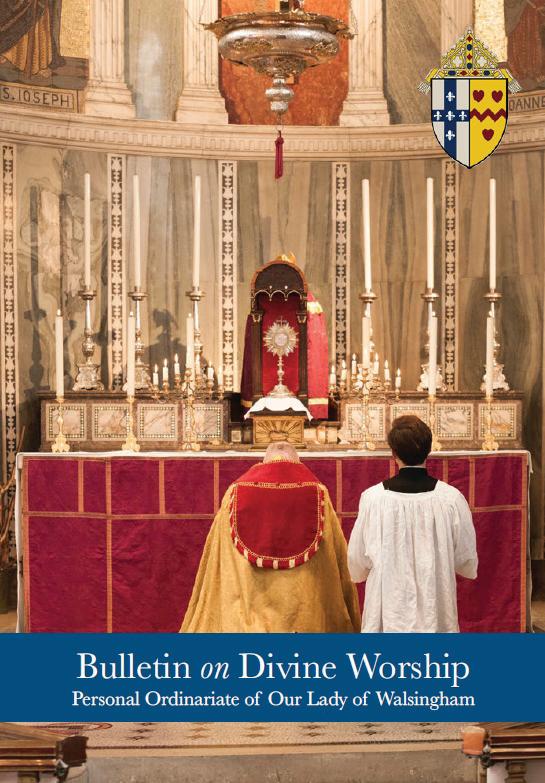
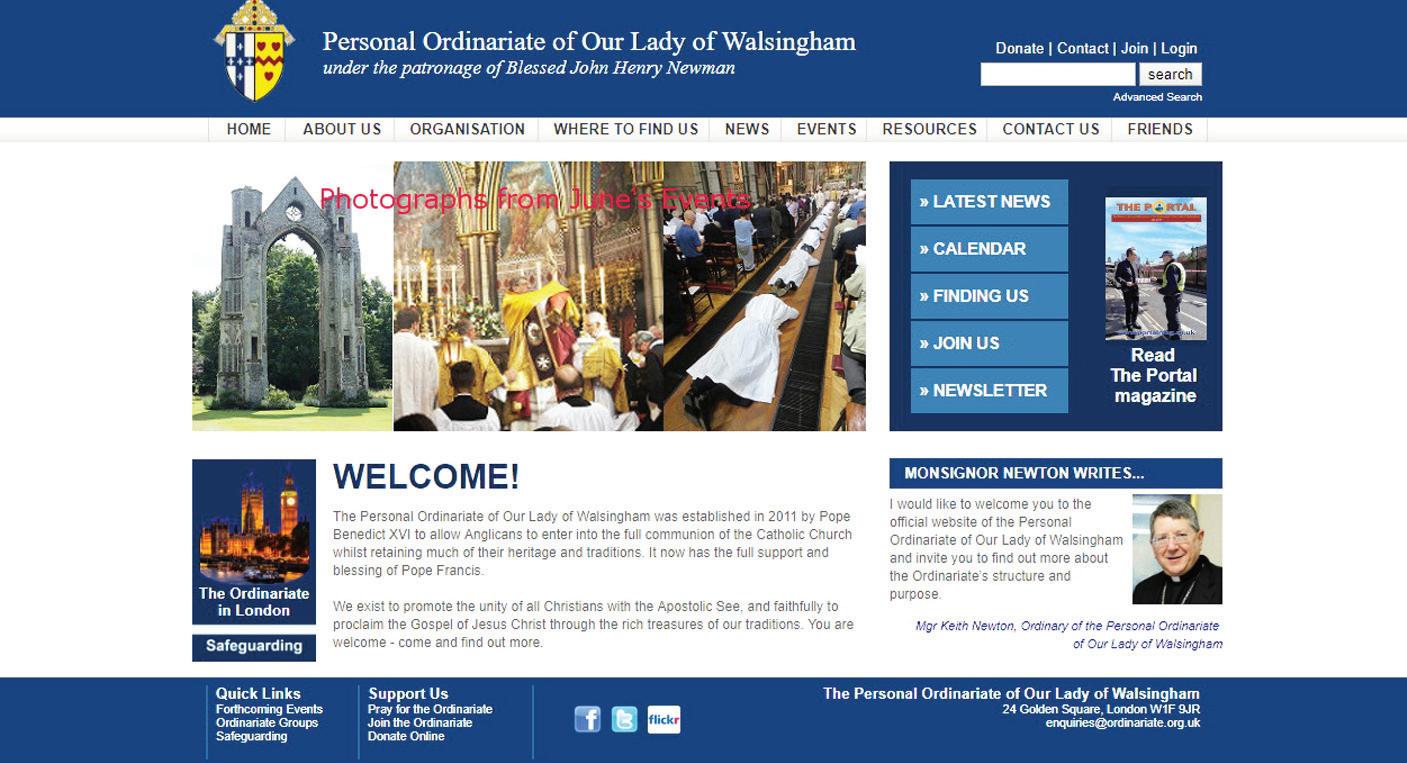
yEARS ago Sean Gough was born in Walsall. He has been in the news recently for his adherence to Catholic Teaching on Abortion. We sat in a comfortable room at SS Peter and Paul Church, Wolverhampton, where he is Assistant priest. He told me about himself. He is a pleasant man with an easy countenance. He puts you at your ease as soon as you meet him.
“I don’t know whether it’s unusual for a priest, but I was born in Walsall as you say, into a Catholic family. I went to Catholic schools. I suppose in many ways I’d say a fairly typical family, not super religious. My first few years were spent living with my Mum. It was maybe a bit hit and miss in the past over whether we’d go to mass. We didn’t pray at home or that kind of thing. However, since the age of about ten or eleven I started to pray for myself and to just develop a relationship with the Lord. I just did that mainly by my own initiative.
“Later on I went to live with my Grandmother and my Aunties as well, and they were more regular in terms of going to church and stuff, even though we didn’t pray at home still. As my relationship started to grow with the Lord that was really when I started to develop a sense of vocation, a vocation to the priesthood.
“It wasn’t clear with certainty, but it was something that was still real none the less. So as I went through secondary school it was quite an inner conflict really because there wasn’t a certainty about it. But sometimes I was taking it seriously, sometimes not taking it seriously, but eventually I knew I couldn’t ignore it any longer.
“When I left school I did a gap year for my diocesan youth retreat centre which was called Alton Castle, which was great fun; then did some studies with the Open University, in philosophy and history and at the end of that, that was when I kind of knew, even though I still wasn’t certain where the Lord was calling me. I knew really that the right thing to do was to follow that path he was leading me down. So I decided to join the Seminary really in a way to discern my vocation.
So it came really quite quickly to me once I actually joined the Seminary, in a couple of years I felt quite confident.”
He was twenty-three when he went to Seminary. Whilst at sixth form he worked in Morrisons, later he worked in a bar and, whilst at Open University, he worked with adults with learning difficulties as a support worker. That didn’t feel like a job. He loved it. Often he would go to work for the day, but it didn’t feel like work, there was so much fun there. Eventually he went to Valladolid in Spain, to the Royal English College of Valladolid, then to St Mary’s College, Oscott, in Birmingham. It was seven years in total.

In Spain it was not a full Seminary. It is used for the first year of seminary it’s called a propraedeutic year. The Ø

emphasis is not on academia, although there is a bit of academic formation, but the emphasis is on the spiritual life, learning about the ecclesial world which for many people in today’s world is more unfamiliar than it was to people in the past, even to those who might have a strong faith. There is a kind of immersion in the church and in the life of the church and so on. It’s also an emphasis on growing as a human being and in virtue and trying to reduce vice and that kind of thing, so that’s what we call human formation in the Seminary. So that is the main emphasis really, your spiritual and human formation.

After a year in Spain it was back to Oscott and eventual ordination as a Deacon in 2019, and a priest in 2020. It had to be delayed because of the pandemic. He was ordained with three others, the highest number for some time. His first appointment is to Wolverhampton. He loves it.

He told me, “I’m with a wonderful parish priest, Fr Mark Crisp. He’s a very good man. When I arrived here there were three different parishes: St Bernadette’s, St Michaels, and SS Peter and Paul of which I was his assistant, but now it’s one parish called Blessed Carlo Acutis. He is a wonderful person for a patron.
“Carlo Acutis, if he was still alive today, would be younger than me by one year. He died at the age of 15 born in London in the UK, then moved as a small child, with his family back to Italy and his family were not particularly religious. Basically, as a very small child he converted his parents back to the faith, in a meaningful way. Just a standard child of his age in many ways, in the sense that he had a great love for computers and video games and stuff but exceptional in other ways in so far as he would fast from playing the video games and he would use the computer for the glory of God.
“You can still go on his website, which he created, where he listed all the known Eucharistic miracles from across the world. An extraordinary young man, declared “Blessed” recently. We are probably the very first parish in the world to have him as our patron. I don’t know that for a fact, because it was about two weeks after he was declared as Blessed, about a year ago, that we were formed into one parish. One parishthree churches.”
I asked Fr Sean about the business with the “buffer zones”. My colleague Gabriel Gilson has written elsewhere in this edition of The Portal about Fr Sean and Isobel Vaughan-Spruce and their trouble in that regard. Fr Sean said conspiratorially, “Would you like to
know something interesting? When the PSPO (Public Spaces Protection Order) was put in place I spoke to a police officer, who was responsible for the local area, and for dealing with the PSPO. I said to him that earlier on today I walked from the Catholic Church, which is just outside the PSPO, to a shop inside it. I was praying the rosary as I walked to that shop and I was praying that rosary for the Pro-life Cause, and I said to him, ‘Was what I was doing illegal?’ He said to me, ‘Yes, what you were doing was a technical breach of the PSPO.’ He said it was unenforceable because I was walking to the shop. He said if I were to stop still and to continue praying, then the police would enforce it.”
I’ve been trying to find out how many people have been arrested and prosecuted for the harassment that was said to make PSPOs necessary, and I cannot find a case. I asked Fr Sean about it. He was not aware of one either.
Fr Sean continued, “There was a government review in 2019 which shows that there was no evidence of any widespread harassment or discrimination. Any negative incidents were very rare, and I think I quote from this review, ’It would be disproportionate to put restrictions in place.’” Ø
Gabriel Gilson, our columnist, has made rather an excellent point that had not occurred to me. The fact that they banned praying means they’re afraid of it, which means it must work. “That’s true, isn’t it?” I asked.
Fr Sean smiled and said, “What’s the quote now about the devil, you know about he’s an idiot because he always goes too far and wrecks his own plans by going too far. It’s almost as though they’ve done the same thing isn’t it?
“By going too far they’ve exposed the ludicrousness. Supposing they just banned signs or sharing information about abortion or even praying out loud, it would still have been ridiculous. It’s still going to breach people’s freedom but it would never have come to this absurd situation where people are arrested and searched on the streets for standing and praying. The Buffer Zones themselves are an infringement of common human rights. I think this is something that people are not necessarily aware of.
“Article 9 of European Convention of Human Rights, gives you an unqualified, unrestrictable right to freedom of your view points, or freedom of thought, whichever way you want to put it. Freedom of speech and freedom of assembly, these are qualifiable rights, they can be restricted by the government for a just cause. But freedom to hold your convictions in your own mind and to think in the way you want to think - the government can have no sway whatsoever on that right. These Buffer Zones are so outrageous because they try to do just that, to stop you and to control the thoughts that you’re having in your own mind.”
I said, “It’s quite obvious to me, Fr Sean, that you rather enjoy being a priest.” He agreed and said, “I do, I love it. Two and a half years into being a priest, it’s a wonderful, wonderful vocation.”
I told him that many of our readers, and indeed the podcast listeners, admire the stand that he has made, and Isobel as well. Two hundred thousand babies a year are lost in the UK every year. That’s the population of Sutton Coldfield, every year.
Fr Sean said, “It’s terribly sad. It truly is the most important social injustice issue of our time that so many innocent human beings are lawfully killed. I think that is the key point. These human beings are being killed legally in our own country and I’m not saying this in a judgemental way at all because it’s normalised so people don’t even necessarily realise what they are doing. Often, people to some extent are

acting with ignorance and this is why it cannot remain as a legal thing and we as Christians and Catholics who believe that every human being has an intrinsic dignity, cannot be silent on this issue. We can’t be bystanders, it’s too important for that and our Lord in the parable of the Sheep and the Goats tells us very clearly that we will be answerable on Judgement Day for what we did for those who were the least of his brethren. I can’t think of a group in today’s world that are more discriminated against, more lowly in our world than the unborn.”
I wanted to put two other points to him before we finished. “People like you and me stand up against abortion and we’re always told, ‘Oh you want to go back to backstreet abortions, where women die because they use needles and what have you.’ Nobody wants that do they?”
Fr Sean took up the baton. “We’ve gone back to backstreet abortions already because the reality is that when people talk about backstreet abortions what they are talking about is an abortion done from a person’s own home. They weren’t backstreet abortion clinics, just abortions done in people’s homes and that’s what we’ve gone back to.
“During the Pandemic it became that you didn’t need to go to an abortion clinic anymore. They’ll send you abortion pills in the post and this really is dreadful. We have gone back to the backstreet abortion. Many of the people I’m working with in Rachel’s Vineyard suffer abortion trauma; this is bad enough to start with, but their trauma is in enhanced by the fact that they are often alone at home when they pass their baby, including all the arms fingers and finger nails and everything. They are often alone, at home, they’re lying in bed, they’re using the toilet and they then have to deal with the remains of their unborn baby that they know they have just taken the life of. The trauma of this is unimaginable and this is what we’re dealing with at Rachel’s Vineyard at the moment.”
The second point I wanted to put to Fr Sean is my experience as an Anglican priest 25-30 years standing. I came across this issue. The doorbell went and a lady in her thirties or forties asked if she could see me. You go into the study, and they burst into tears and tell you that they killed their baby.
Fr Sean said that it was one of the most difficult things to deal with. “As a priest you have to be compassionate, you have to be loving, you have to be non-judgemental. After all, they’re a victim too. To be clear, you can’t tell somebody what they did didn’t matter or that it was OK, but you also need to be understanding that Ø
we live in a world which sets people up to dehumanise the unborn. And so it’s no wonder that so many women make this mistake.
The bumper sticker on my car which I was charged for read ‘Unborn lives matter’. I chose to have that particular sticker because the whole point about ‘Black lives matter’ as a slogan was that black lives matter as well. Black lives matter as well, equally, and that’s the point I want to convey through my sticker, that the lives of the unborn matter as well, they deserve to have equal dignity and worth with any others. No human being’s worth or sense of dignity should be measured against any external or circumstantial value.”
We are very grateful to Fr Sean for his time and thoughts, and telling us of his experience. I cannot help thinking that with young priests like Fr Sean about, the Church is in good hands for the future.
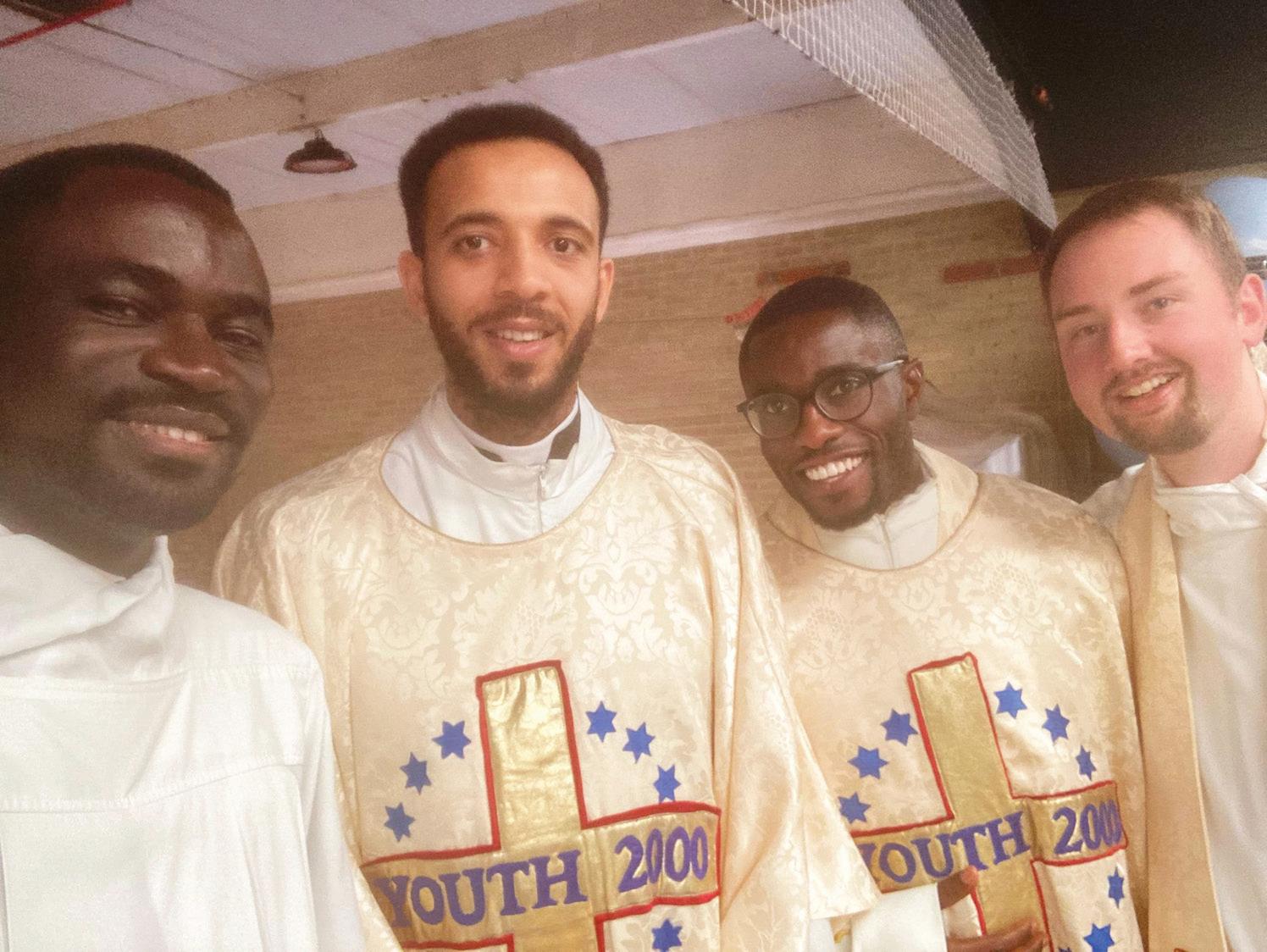
According to their Web Site, “Rachel’s Vineyard is a healing ministry for those who are suffering from the trauma of abortion(s) or have been closely connected to someone who is; this includes siblings, grandparents, aunts etc. We recognise that abortion impacts the wider family and community.
We also support those that have worked in the abortion industry and subsequently regret the part they have played in abortion decisions.

Our retreats offer a unique sensory based treatment which integrates emotional, psychological and spiritual dimensions.

The healing journey uses creative “Living Scripture Exercises” which engage the mind, body and soul. The Living Scriptures coupled with group activities, therapeutic facilitation, cognitive restructuring and discussion offer an effective process for grief work grounded in biblical principles. This unique programme provides a safe and effective recovery process for anyone suffering after an abortion experience, regardless of religious preference or personal beliefs.
Founded in the United States in 1994 by Theresa Burke, the Rachel’s Vineyard Retreat model has spread to many countries across the world, including our retreats in England and Scotland.”
You may find them at: Rachel’s Vineyardrachelsvineyard.org.uk
 Ronald Crane
Ronald Crane
OnEyEAR ago, on the 24th February 2022, the Russian military began its unprovoked attack on, and invasion of, Ukraine. The Russian authorities thought it would all be over in a matter of days. Ukraine would be crushed and absorbed into the Russian Federation. It has not worked out like that. The Ukrainian forces have showed heroic amounts of courage, fortitude and ability. Their capital city has been defended and the Russian forces have withdrawn to the east of the country.
I write this on the first anniversary of the start of this war. At a Press Conference to mark this anniversary, Bishop Kenneth Nowakowski said in answer to a question about how the First Sunday in Lent, being “Forgiveness Sunday” for Ukrainian Catholics, resonated with him. He answered the question head-on. He agreed that the First Sunday of Lent is indeed “Forgiveness Sunday”. “It is”, he said, “How we begin Lent. We ask forgiveness of those whom we have offended and we forgive those who have offended us. This year it will be challenging, We are called upon to forgive our enemies. It is hard to forgive, when the other side does not feel remorse or guilt. It is challenging. That is what it is about for people of faith.”
The Bishop was joined at the Press Conference by Petro Rewko, Chair of the Association of Ukrainians in Great Britain and Andriy Marchenko, Director of the Ukrainian Welcome Centre at Duke Street in London. The Welcome Centre has been set up by Ukrainian Catholic Eparchy (Diocese) of the Holy Family of London, and the two other organisations represented at the Press Conference. They answered questions on various subjects relating to the problems thrown up by the war both in the Ukraine and here in the UK.
The Bishop spoke of his recent visits to Ukraine and the horrors he saw while there. He confessed that he had cried so much that he has no tears left with which
to cry. We were told of the work of the Welcome Centre and were able to pay a visit.
I suppose I had expected something like a church hall with functional chairs and so on. I had a shock. The Welcome Centre is beautifully furnished with comfortable chairs, Internet Screens, facilities for tea and coffee making, as well as a host of rooms for various classes. It was pointed out to us the tensions and frustrations experienced by those displaced people using the Centre. We were told of a University Professor who cannot even ask the time of day because he cannot speak English. English classes are very popular. Among the multitude of other classes I spotted one assisting people with their CV. There were about thirty women taking the class, all of whom want to work, so as to be independent and not reliant on Universal Credit.
Bishop Kenneth showed us paper angels made by the children: 462 angels made by 160 children from newspaper from the Ukraine to symbolise those children killed by Russia.


We were told of the plans for the 24th February, and my colleague Basil Youdell will have a report on the Portal FaceBook page.
Please join the Portal in praying for the people of the Ukraine, as well as Russia and those young men fighting this terrible war.


The future of humanity passes by way of the family. (Pope St John Paul II, York, 1982)
Father Michael HalsallTHEwEEK of 7th – 14th February was National Marriage Week in England and Wales, and by marriage we mean marriage as God intended: one man and one woman, for life. The theme for this year is ‘Marriage … one flesh, given and received’. (https://www.cbcew.org.uk/marriage-week / )
We have only to watch the devastating scenes of the aftermath of earthquake in Turkey to see how much spouses and their children mean to each other: how the catastrophic fracture of the family is highlighted by natural disaster. Yesterday morning I saw on the television news a moving reunion of a man and his wife, where he had been away on business, and rescued from the rubble. His wife had driven for three days to get to the scene, and their emotional reunion was a wonderful testimony to the blessed union of committed and loving spouses.
Contrast this to popular media images and programming, focusing on the dress, the husbandto-be choosing and organising the wedding day, and the ridiculous concept of ‘married at first sight’. Consider also the highly sexualised reality television relationship programmes such as Love Island, and Naked Attraction. Such programming has many followers, and promotes a skewed idea of what human relationships truly are, and prize the sexual aspect of relationships above the other virtues needed to make a successful marriage.
By saying ‘I do’ the couple begin a journey that calls for great courage, generosity and commitment. They need the welcome, and practical, relational and spiritual support of the community not only at the start, but throughout the seasons of married life, to help them live out their calling to a life-long, loving and fruitful commitment. In the words of Pope Francis, “Married life is a process of growth, in which each spouse is God’s means of helping the other to mature… Fostering growth means helping a person to shape his or her own identity. Love is thus a kind of craftsmanship… At every new stage, they can keep ‘forming’ one another. Love makes each wait for the other with the patience of a craftsman, a patience which comes from God” (Amoris Laetitia, 221).
It is true to say that marriage is in decline: fewer people are getting married, and consequently fewer are getting divorced. For the whole of my lifetime, the media outlets have often undermined marriage, often through soap opera scenarios, where few normal and stable family groups are portrayed today. Images and role models are vitally important to how society responds to truth – and the truth about marriage prevails in the church and wider society, bearing witness to the essential link between the marriage bond and the creation of man and woman: “Sacred Scripture begins with the creation of man and woman in the image and likeness of God and concludes with a vision of “the wedding-feast of the Lamb.” Scripture speaks throughout of marriage and its “mystery,” its institution and the meaning God has given it, its origin and its end, its various realisations throughout the history of salvation, the difficulties arising from sin and its renewal “in the Lord” in the New Covenant of Christ and the Church” (Catechism, para 1602).
Marriage is not simply a utilitarian relationship, where two can live as cheaply as one; where children can thrive due to the mutual love and support of the wider family: “Marriage is a vocation, in as much as it is a response to a specific call to experience conjugal love as an imperfect sign of the love between Christ and the Church. Consequently, the decision to marry and to have a family ought to be the fruit of a process of vocational discernment” (Pope Francis, Amoris Laetitia, 72).
In choosing marriage, husband and wife embark on their joint journey to heaven; the journey back to God. For better and worse; richer and poorer; in sickness and in health. We pray for the divine institution of marriage, and all married couples
Fr Halsall is Vicar for Vocations and a lecturer in Philosophy Allen Hall Seminary
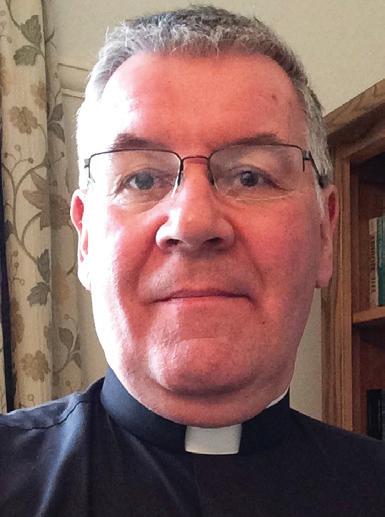



THEcAnTAL is one of the emptiest parts of France. When you hear what sounds like cow bells, it is not ringing in your ears or even a Mahler symphony; it most probably is the bells of the Cantal cows. One of the few towns in this rural idyll, Mauriac stands on the zero meridian. The Basilica of Notre Dame des Miracles is an 11th-12th c. building, the finest church in the Haute Auvergne. A place of prayer, it has a wonderful silence. High above the High Altar is a venerated statue of ND des Miracles, said to have stopped droughts and a cholera outbreak in 1832. On my most recent visit, in October 2022, I spotted a new statue in the south chapel, of a Dominican tertiary.
Catherine Jarrige (1754-1836), known as Catinon Menette (‘Cathy the little nun’) in the local patois, was born on a nearby farm. The youngest of seven children, she received hardly any education, working on the farm before becoming a lacemaker in her teens. Devout from childhood, she looked after the poor all her life, begging to provide food and clothing for them. Becoming a lay Dominican, she came into her own in 1791 when the French Revolution entered a phase of persecuting the Catholic Church.
Priests were asked to swear an oath to the state, ‘prêter le serment’, which many regarded as apostasy. Priests who would not, went into hiding. Jarrige went around visiting priests in their hides at depth of night, providing them with vestments, wine, wafers and sacred vessels, for clandestine Masses. She brought them babies to baptise. She also escorted them to remote locations, pretending to be their wife, often scolding them to fool the troops and gendarmes. They would pray to Our Lady of Miracles to help them.
She went into areas where even the strongest men would not venture after dark. People said to her ‘Weren’t you afraid?’ ‘Oh, no’ she said ‘When leaving Mauriac I’d make my act of contrition, put my rosary in my hand and set off. In any case, I wasn’t alone’. ‘Really, who was with you?’ ‘Oh, le bon Dieu!’ Sometimes she’d
sing the Marseillaise or put a cockade on her hat. She was arrested several times but the Revolutionary tribunals she appeared before set her free each time.
The civil authorities could not believe that someone who seemed so wretched could trick them as Catherine did. She saved all the priests she looked after, except one. François Filiol was born near Mauriac, studying there before seminary in Clermont-Ferrand, then becoming the assistant priest of nearby Drugeac in 1790. At the Revolution he exercised a clandestine ministry. Betrayed, he was sent to the guillotine beside the church at Mauriac; Catherine Jarrige walked with him to the scaffold on May 14th 1793. After his martyrdom, she dipped a cloth in his blood and applied it to the face of a blind child, who recovered their sight.
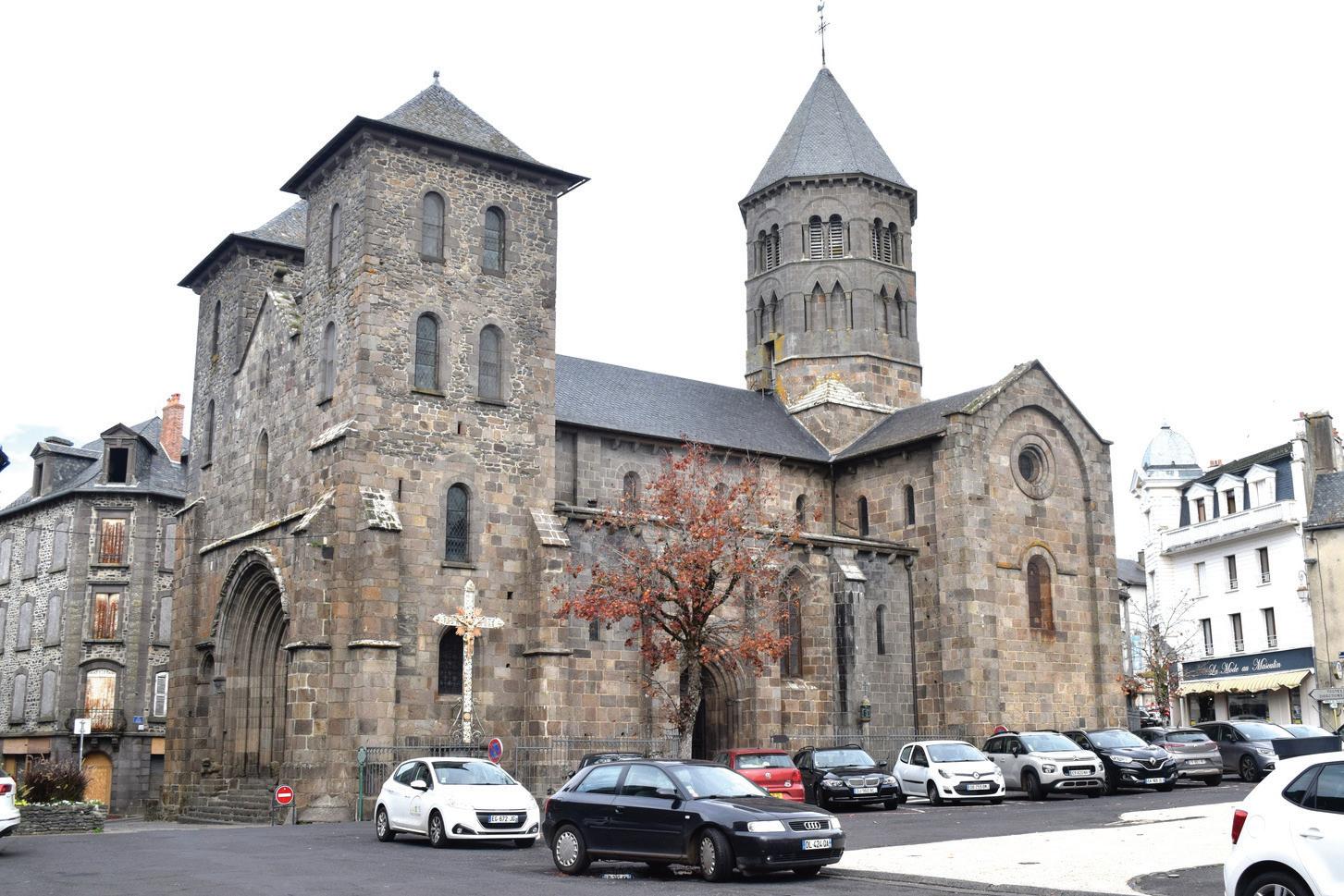
After the Revolution ended, Catherine continued her life of abnegation, begging alms for the poor. No one would refuse her. She fed whole families and took particular care of orphans. The visiting Bishop of Saint Flour would ask for her blessing, and when she died, the whole town came to her funeral.
Blessed Catherine Jarrige was beatified by John Paul II in 1996. I’m no good at praying, but when I go to Mauriac, I want to pray with Our Lady of Miracles, and with holy saints and martyrs.
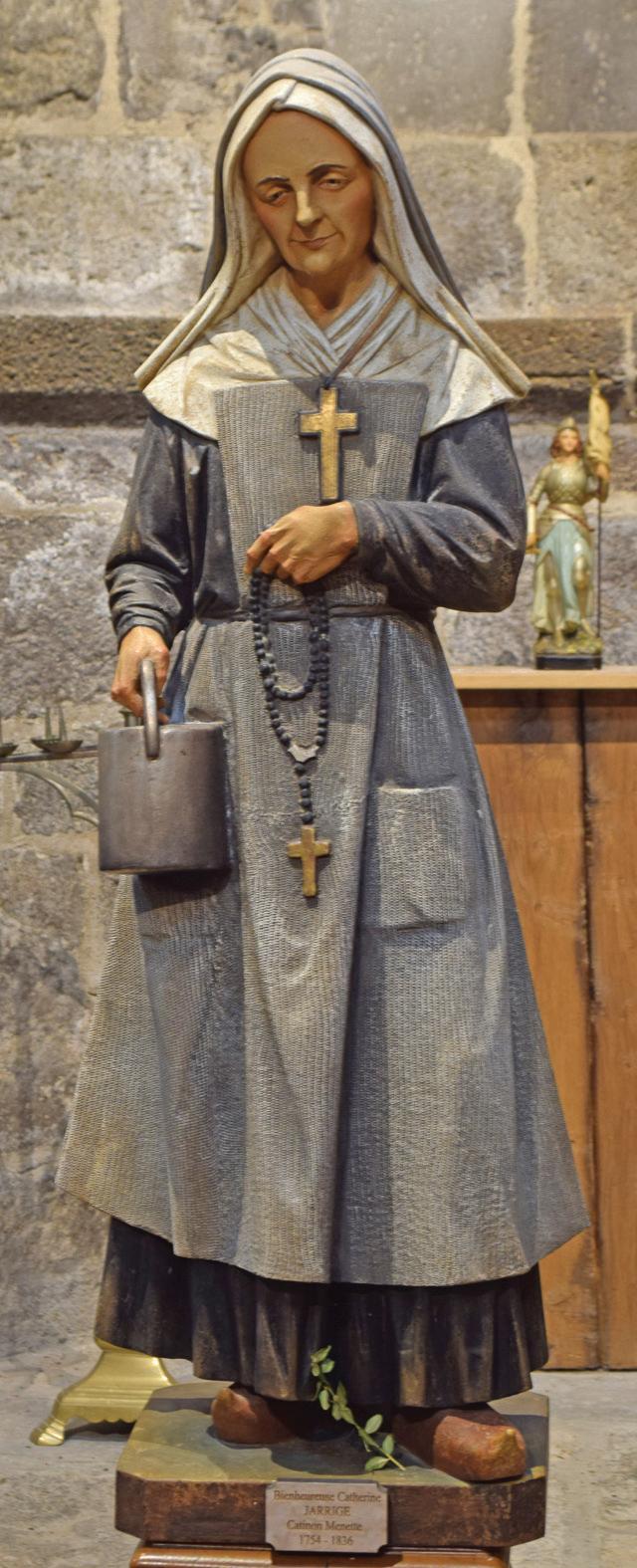


SynOd met at Church house Westminster from 6th to 10th February. There was a large amount of legislation, covering a variety of topics. The Draft Diocesan Stipends Funds (Amendment) Measure was given final approval and will in due course be considered by the Ecclesiastical Committee of Parliament. The Measure will give power to Diocesan Boards of Finance to transfer by way of gift some of its Diocesan Stipends Fund to other dioceses or to the Archbishops’ Council. It is purely permissive and no diocese will be required to give money away. An amendment that the power should not be exercised without the approval of the diocesan synod was defeated by 158 votes to 128.
Other legislation passed through various stages, though some was never reached due to the overrunning of the Revision Stage of the Draft Miscellaneous Provisions Measure and the mammoth eight-and-ahalf-hour debate (spread over an afternoon and the following morning) on same sex relations.
The latter debate, coming after a five-year programme of study and discussion called ‘Living in Love and Faith’ passed a motion moved by the Bishop of London on behalf of the House of Bishops which had six parts. It lamented and repented of the failure of the Church to be welcoming to LGTBQI + people; It recommitted to a shared witness to God’s love for and acceptance of every person; commended the continued learning together in relation to identity, sexuality, relationships and marriage; welcomed the decision of the House of Bishops to replace with new pastoral guidance Issues in Human Sexuality (a document published in 1991 which stated that though lay people could in conscience enter into sexually active homosexual relationships ‘the clergy cannot claim the liberty to enter into active homophile relationships’); looked forward to the bishops refining, commending and issuing Prayers of Love and Faith (prayers which may be used with same-sex couples after a civil partnership or marriage); invited the bishops to monitor the use of and the response to the prayers and report back to Synod in five years time.
There were no fewer than 27 amendments on the Order Paper, most of which were lost. A request for further legal, theological and practical consideration to be given to the new pastoral guidance was lost by small majorities in the Houses of Clergy and Laity but by 27 to 15 in the House of Bishops. The fact that 27 bishops voted against further work on such a contentious issue is worrying, but probably says something about the theological and educational standards in the current House of Bishops. An amendment to bring proposals for equal marriage to the July 2023 Synod was defeated by 30 to 6 by the
bishops, 105 to 79 by the clergy and 102 to 89 by the laity. This shows that this Synod is orthodox on marriage and it would never pass the necessary two thirds majority to change the canon on marriage. The only amendment to be passed was one endorsing the decision of the bishops that Prayers of Love and Faith should not be contrary to the or indicative of a departure from the doctrine of the Church of England.

No-one is happy with the mess we are now in, caused by a failure of leadership by the bishops. As one speaker said, the report issued by the bishops would fail as an undergraduate essay as not showing any proper theological, legal or practical working. The Archbishops have called an urgent meeting of bishops to discuss how to proceed following adverse reactions in England and in the Anglican Communion.
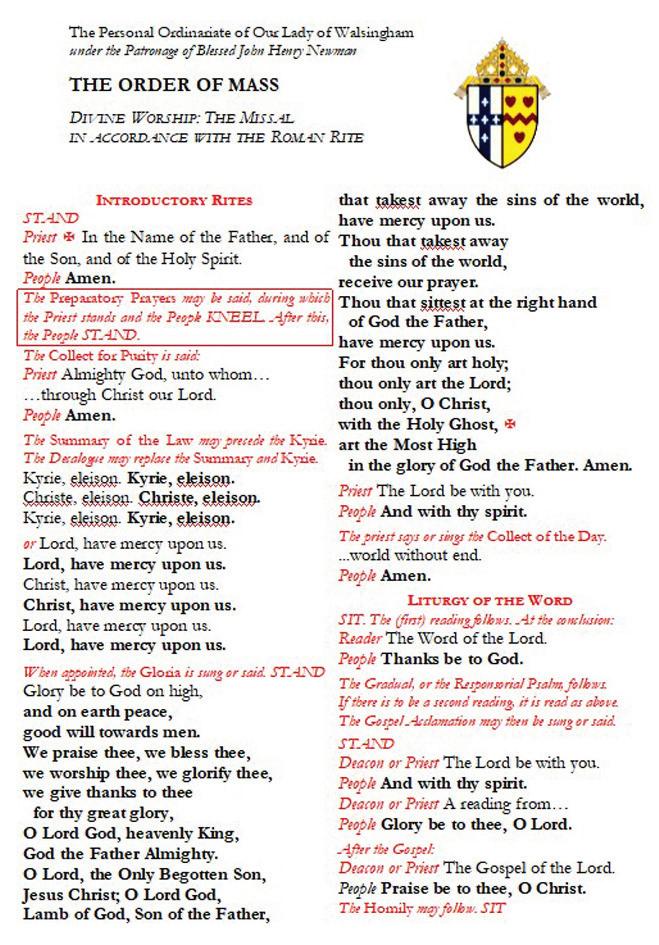
Divine Worship: The Missal in accorDance WiTh The roMan riTe
Ordinariate Mass cards with the Order of Mass from Divine Worship: The Missal are now available

Prices including UK delivery: £1 for a single copy, £3.50 for 10, £14 for 50, £26 for 100, £48 for 200
Overseas enquiries: email mass. cards@ordinariate.org.uk for postage costs
To order, please send your name and address with your cheque, made payable to Ordinariate OLW to: Mass Cards, Ordinariate OLW, 24 Golden Square, London W1F 9JR
 John Pontifex
John Pontifex
THOSE of us who believe that prayer is for bad times and gratitude for good times, we have valuable lessons to learn from Nigeria’s suffering Christians. Many of them persistently heed St Paul’s call to “thank God always”.
Margaret Attah, a mother-of-four who lost both her legs and went blind in one eye during last year’s Pentecost Sunday massacre in Ondo State, Nigeria, left a deep impression on me when she told me that: “I know I will not be able to live quite as I did before but I thank God I am alive. I have so many reasons to be grateful to God.”

It would be nearly six months before she was able to leave hospital and return to her husband, Dominic, and their two boys and two girls, aged between fifteen and seven. With 41 brutally murdered in the Islamist attack, Margaret considers herself blessed to have survived.
Around the world, Christians are suffering in greater numbers than ever. They feel that the world neither knows nor cares about them yet many, like Margaret, have not given up their faith in God, their supernatural forgiveness of their enemies and their hope of eternal life.
Aid to the Church in Need aims to break the silence on their persecution and to be their voice. ACN tells their stories of heroic courage and supports them to persevere in the Faith, as well as alleviating their suffering where possible.
Inspired by Margaret’s story and the need to help Nigeria’s Christians, ACN is running a petition to Government, which you are warmly invited to sign and share with others.
The petition “requests that the UK Government call
on their Nigerian counterparts to bring to justice those responsible for genocidal attacks such as the Pentecost Sunday 2022 massacre and countless other killings, abductions and other atrocities.”

It continues: “The UK Government must demand the arrest and imprisonment of terrorists, the return of lands and villages, as well as compensation for the destruction of properties and livelihoods.” Fiona Bruce MP, the Prime Minister’s Special Envoy for Freedom of Religion or Belief, has agreed to receive the petition at No. 10 Downing Street in April.
More than a few times I have been asked about the effectiveness of petitions, and whether they have any impact at all. With each passing day, with each month that silence descends over the killing fields of Nigeria, I am increasingly convinced that their effect is their very existence.
A good petition is an expression of our duty to stand up for our principles regardless of what response they garner: that is the purpose of our petition in honour of and in service to Nigeria’s persecuted Christians, whose persevering gratitude to God in the face of adversity points to the never-ending justice of the world to come.
To sign the petition visit: www.acnuk.org/ petition-2022/

nEwMAn, gROwIng up in London, was familiar with cockney slang and used colloquial language in his letters. Perhaps, he sympathised with his Oxford parishioners having, as his 1824 diary notes, buried “Gedge the umbrella maker” by calling him ‘the Brolly Man’.
How often Newman protected his correspondence, undergoing the storms of religious doubt, with an ‘overarching canopy’ of reassurance. We see an example of this sure shelter in his 1839 Sermon, heralding the journey of forty days with Christ to Calvary and beyond:
From the first age downward, not a year has passed but Christians have been exhorted to reflect how far they have let go that birthright, as a preparation for the claiming the blessing. At Christmas we are born again with Christ; at Easter we keep the Eucharistic feast. In Lent by penance, we join the two sacraments together. (Parochial and Plain Sermons VI, 2).
On 27 March 1867, two weeks into the penitential season of accompanying Jesus in the wilderness, Newman enthusiastically responds to Emily Bowden’s gift: “…I rejoice to have this volume… I have long had a devotion to the Fathers of the Desert.” (Letters and Diaries XXIII,110).
Newman also sounds a note of caution - advising us not to set unrealistic Lenten goals. They are to be challenging, but achievable and carefully tailored.
We should very much be on our guard when we are engaged and contemplating the lives of Holy Men, against attempting just what they did; which might be right indeed in them, and yet to be wrong in us… We ought to attempt nothing but what we can do. (Parochial and Plain Sermons VI,3.).
Newman outlines the consequences of choosing penances which are too difficult to manage and become occasions of sin, which harm others, through our inevitable “ill-temper”. (Parochial and Plain Sermons VI, I).
He also warns us to be watchful: “It will be a sad remembrance…if we shall find after all, that we have undone what was right and profitable in our Lent exercises by a relapse in Easter-tide.” (Parochial and Plain Sermons VI, 3.)
Newman recognises that every serious spiritual
intent benefits from a lightness of approach. Struggling to manage this balance himself, he crisply replies to Miss Munro’s Pre-Lent letter of 11 February 1850, because her friend, Miss Moore, has described him as “a saint”:
I have nothing of the Saint about me as everyone knows …I may have a high view of many things but this is very different from being what I admire… It is enough for me to black the saint’s shoes - if St Philip uses blacking in heaven. (Letters and Diaries XIII, 419).
Newman encouraged everyone to believe that becoming holy was within their reach. Sharing a proverbial expression, commonly used by his congregation, he concludes:
It is an old saying, “out of sight, out of mind”. Be sure, so it will be, so it must be with us, as regards our blessed Saviour, unless we make continual efforts all through the day to think of Him, His love, His precepts, His gift, and His promises. We must recall what we read in the Gospels and in holy books about Him; we must bring before us what we have heard in Church; we must pray God to enable us to do so… In a word we must meditate, for all this is meditation; and this even the most unlearned person can do and will do, if he has the will to do it. (Parochial and Plain Sermons VI, 4).
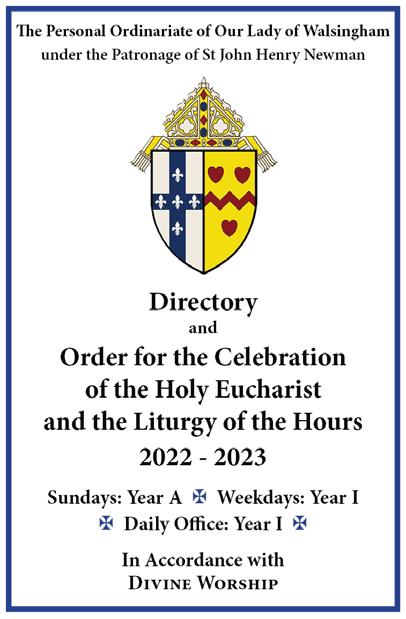

It contains the Directory of Ordinariate Groups, Missions and Parishes, the clergy, officials and details of the structure of the Ordinariate as well as the Calendar for the Liturgical Year with references to the page numbers in Divine Worship: Daily Office (Commonwealth Edition)

 Fr Paul Burch, Episcopal Vicar for Evangelisation
Fr Paul Burch, Episcopal Vicar for Evangelisation
InAn essay entitled, The Necessity of Active Evangelization, one of several essays in an excellent publication, The Anglican Patrimony in Catholic Communion: the Gift of the Ordinariates (Bloomsbury 2021), Monsignor Timothy Perkins, Vicar General of the Ordinariate of the Chair of Saint Peter, asserts that, “the time has come for the Ordinariate to embrace its evangelizing mission”. A passive approach to evangelism will fail, he argues.
The Ordinariates’ core mission of evangelisation is “only beginning to come into the corporate consciousness of the clergy and laity.” Cutting to the chase, Perkins contends that the Ordinariates need to look beyond attracting disenchanted Anglicans toward actively evangelising other groups including lapsed Catholics, Christians baptised in other communities, and those having no religious affiliation. The patrimony is evangelical.
With the revised Complimentary Norms which widen eligibility for membership of the Ordinariates, Perkins argues that, “it is clear that as the second decade of Ordinariate life begins, it is time to move beyond a merely responsive posture. It is not enough for members and communities to passively wait for persons outside the Ordinariate to express curiosity.
The Holy See has affirmed that the Ordinariate shares in the mission mandate Our Lord gave to his Church. The mission to make disciples, baptise and teach the fullness of truth revealed in Christ is the mission of the Ordinariate, just as it is the mission of the whole Church.”
It is in this spirit of active evangelisation that the Personal Ordinariate of Our Lady of Walsingham is calling on all its groups and communities to carry out a mission audit.

One can blame Covid for lots of things, but I think it is the case that the energy of the vision document, Our Calling & Our Mission, produced for the tenth anniversary of the publication of the Apostolic Constitution Anglicanorum coetibus late in 2019, was locked down and remains somewhat latent because of the restrictions and uncertainties of the last few years. Our mission audit aims to reacquaint us with
the vision of Our Calling & Our Mission and unleash some of its energy.
Each group will be asked to formulate a Mission Action Plan (MAP), a simple document which articulates a vision for the group’s growth, and the practical steps needed to move towards this. Essentially groups – clergy and laity together - are being invited to ask of themselves: Where are we now? Where do we want to be? What’s the best way to get there? What do we need to do now?
Inevitably groups compare themselves to other groups, usually the bigger and more ‘successful’ ones, and perhaps become a bit despondent. A MAP helps a group to focus on what it is doing well, and on what is necessary and possible for it to grow in its unique situation. It is good of course to learn from each other, but the MAP process encourages a group to ask, Where are WE now? What can WE do? Where do WE want to be? What’s the best way for US to get there?
A MAP doesn’t have to be a complicated document. It might highlight three or four areas for development. By its nature, it is not a static document, but will develop over time and change as it is used and reviewed. Crucially, it is not an end in itself, but a means to help our groups become more mission-oriented and focussed on new possibilities for reaching out and flourishing.
If you are a member of an Ordinariate group, please ask your group pastor for more information. Group pastors have been asked to nominate a link lay person, who, with the group pastor, will receive more information about the process of formulating a MAP. Please get involved in your group’s conversations and planning. And most importantly, please pray.
You can help restore the monastery of San Benedetto in Montethe birthplace of Saint Benedict himselfby purchasing the exceptional beer brewed by the monks.

Enjoy these beers as you celebrate feast days or with a gathering of friends knowing you are supporting the ongoing establishment of a spiritual oasis built to last a thousand years.
Birra Nursia flows from the deep brewing heritage of western monasticism. Originally crafted to suit the rich culinary traditions of Umbria it is best enjoyed alongside delicious meats, cheeses and mushroom infused dishes.
Find out more about the beers and the monastery at www.monasticorder.co.uk where Birra Nursia is now available for the first time in the UK.
